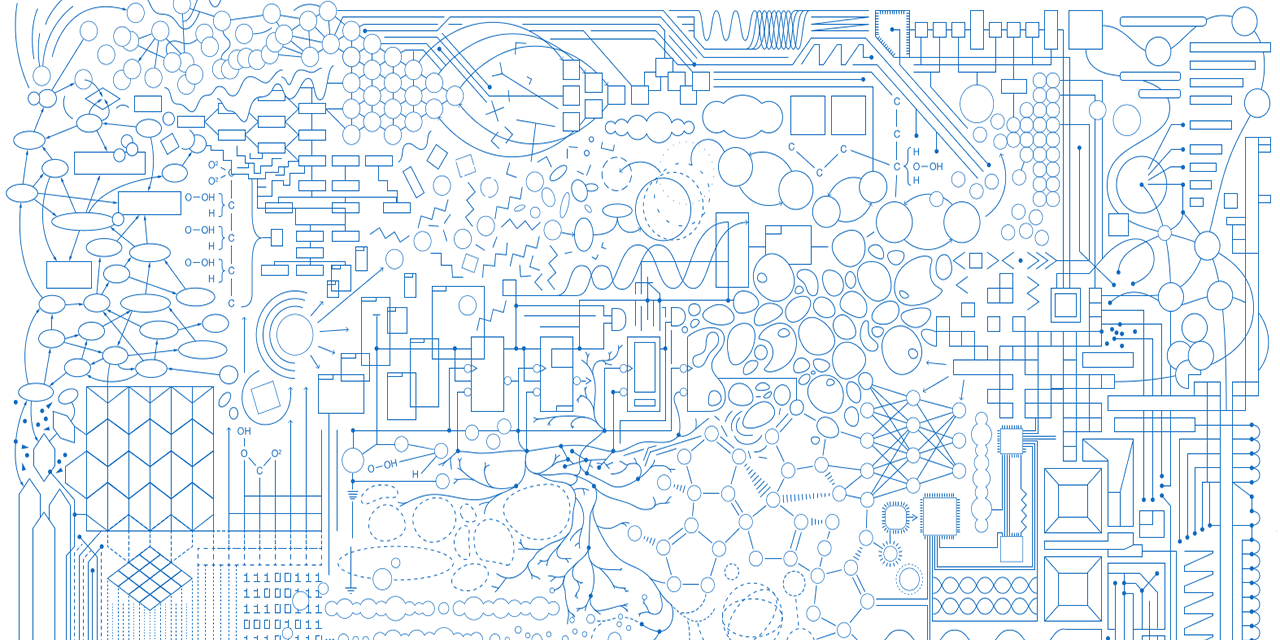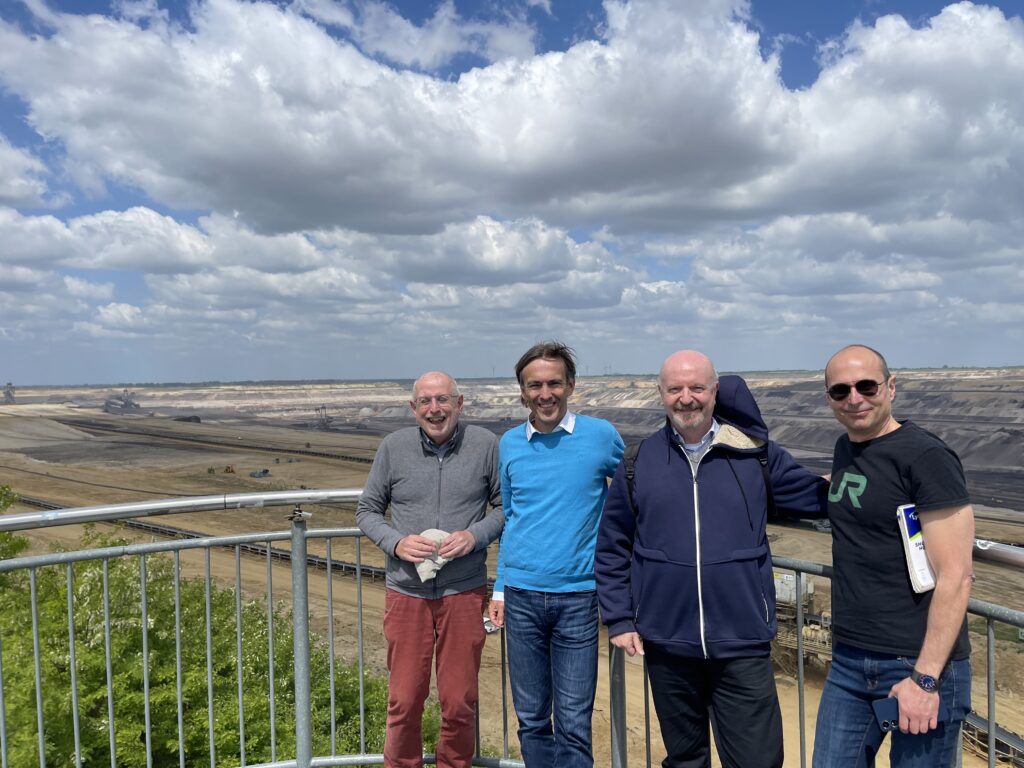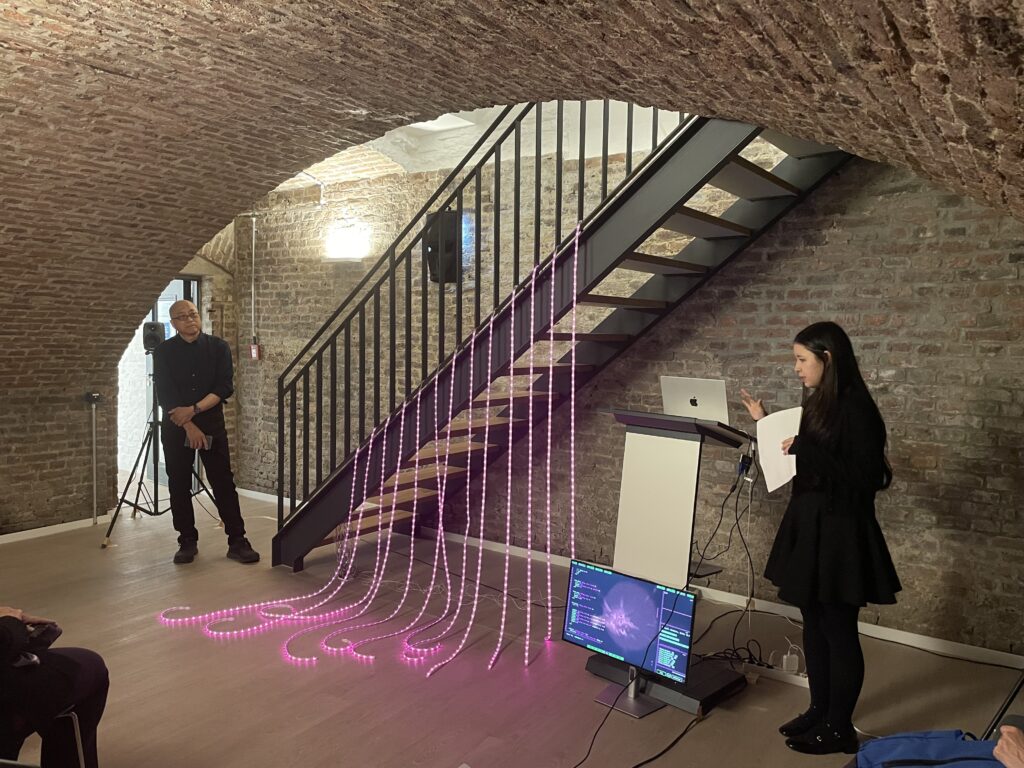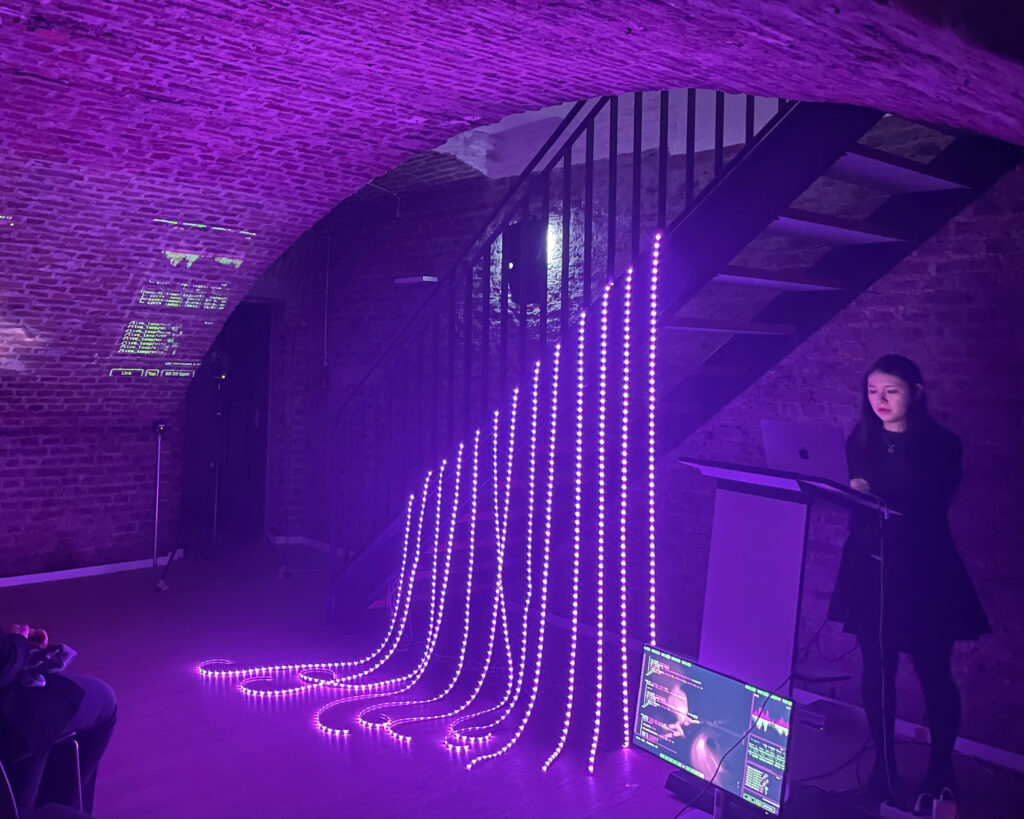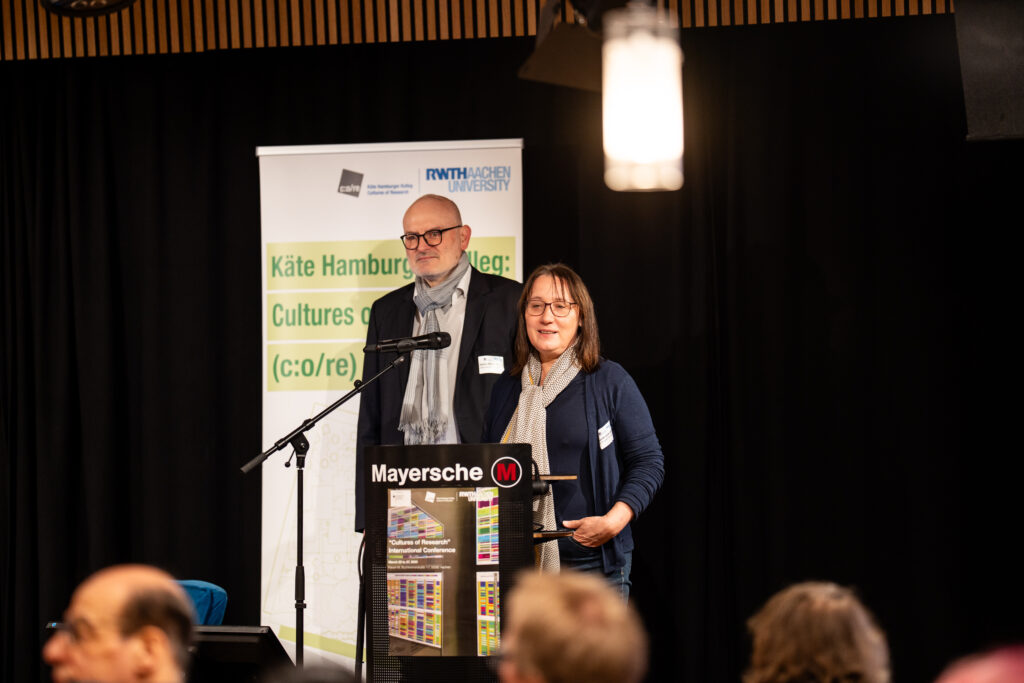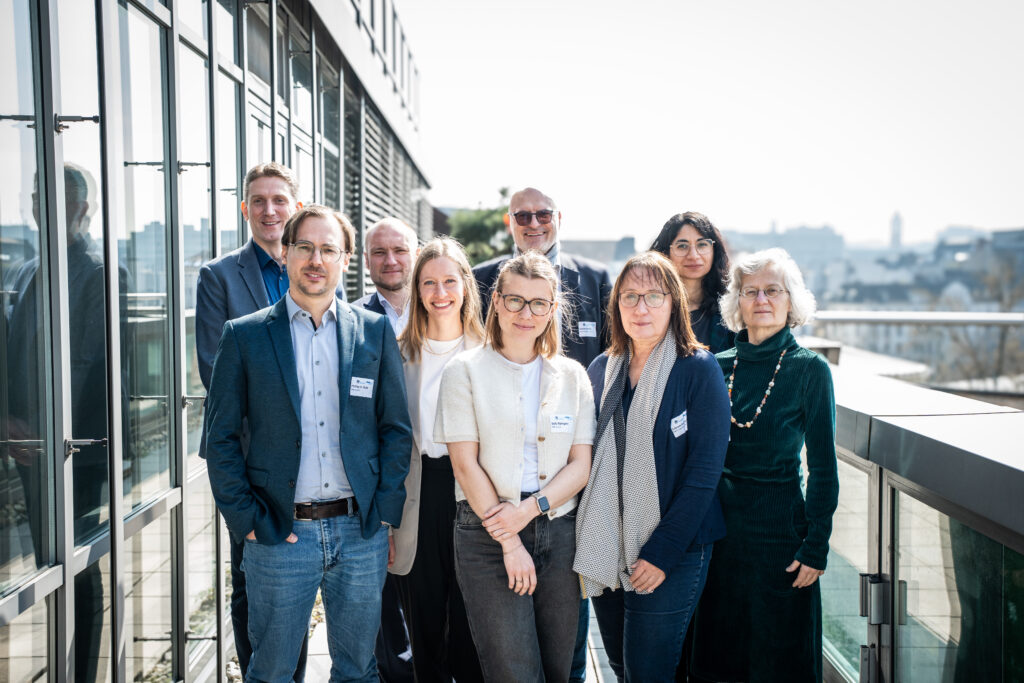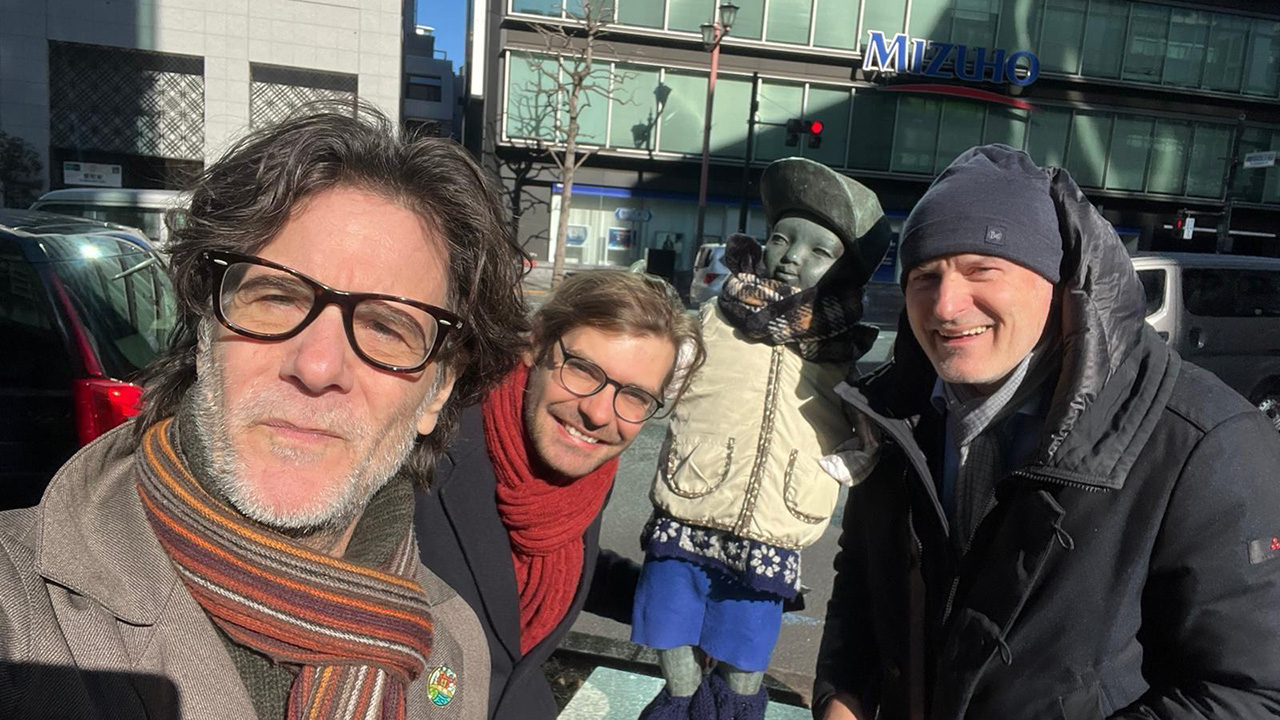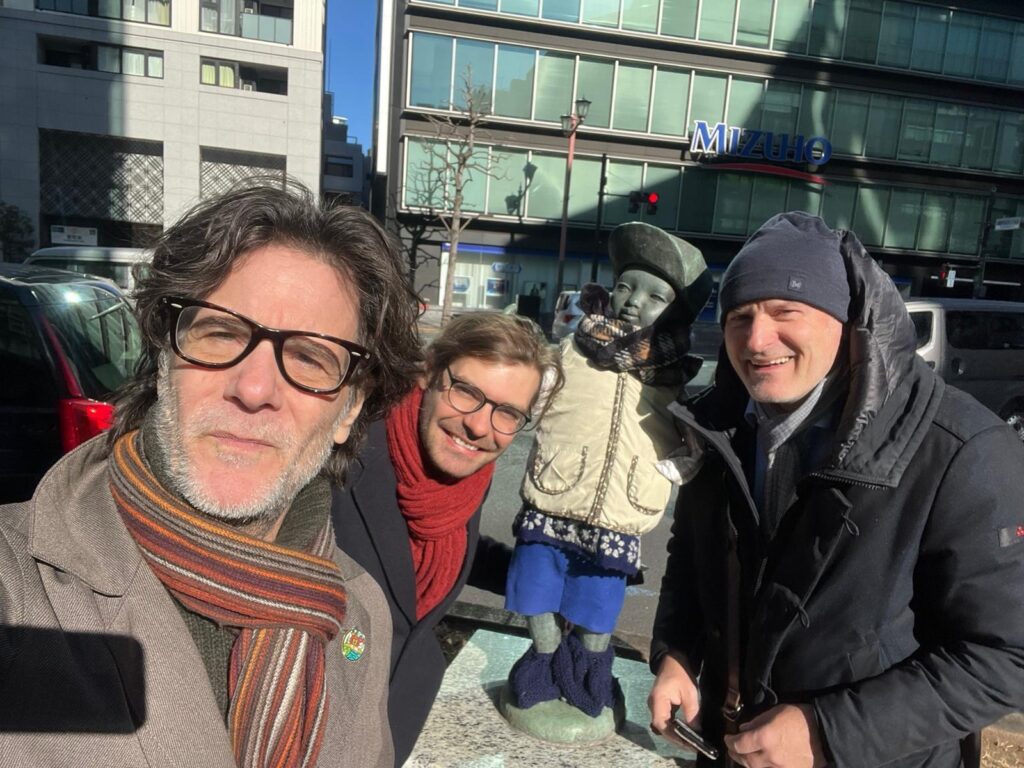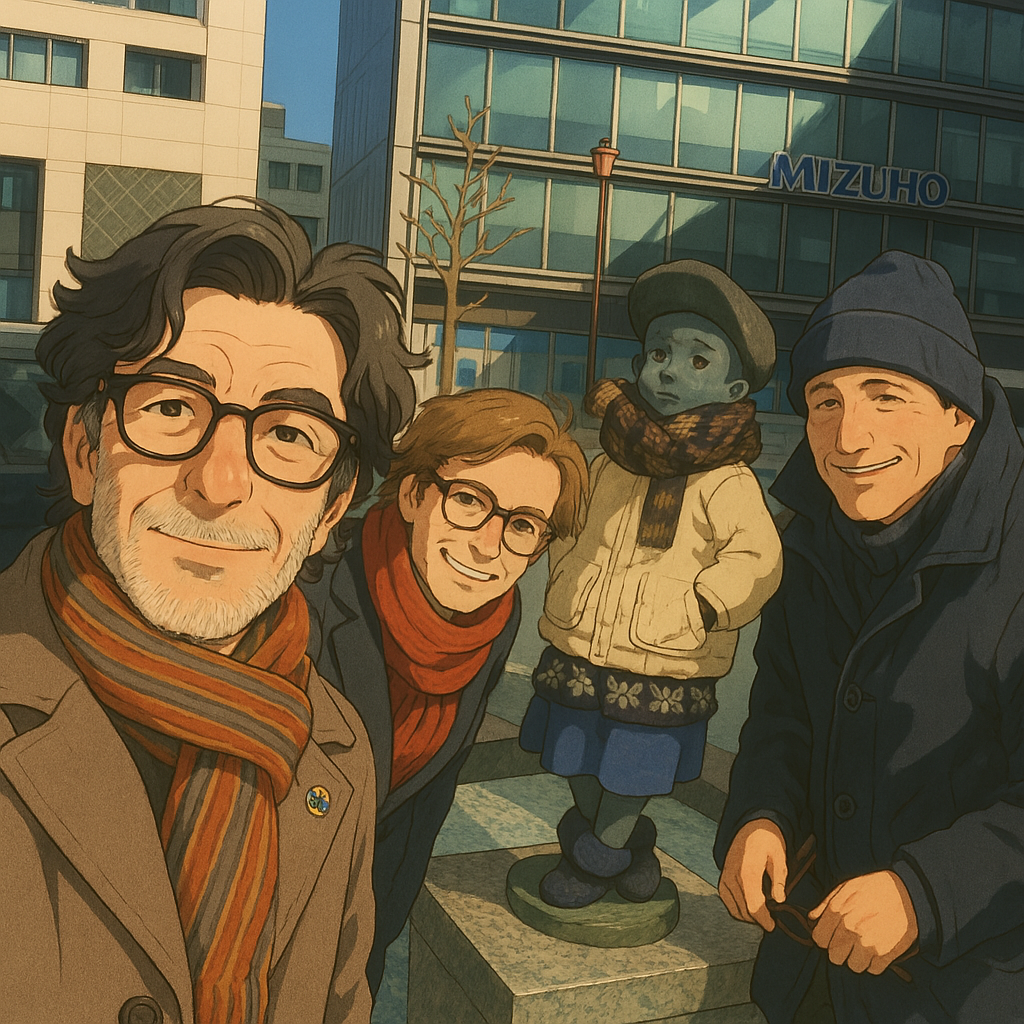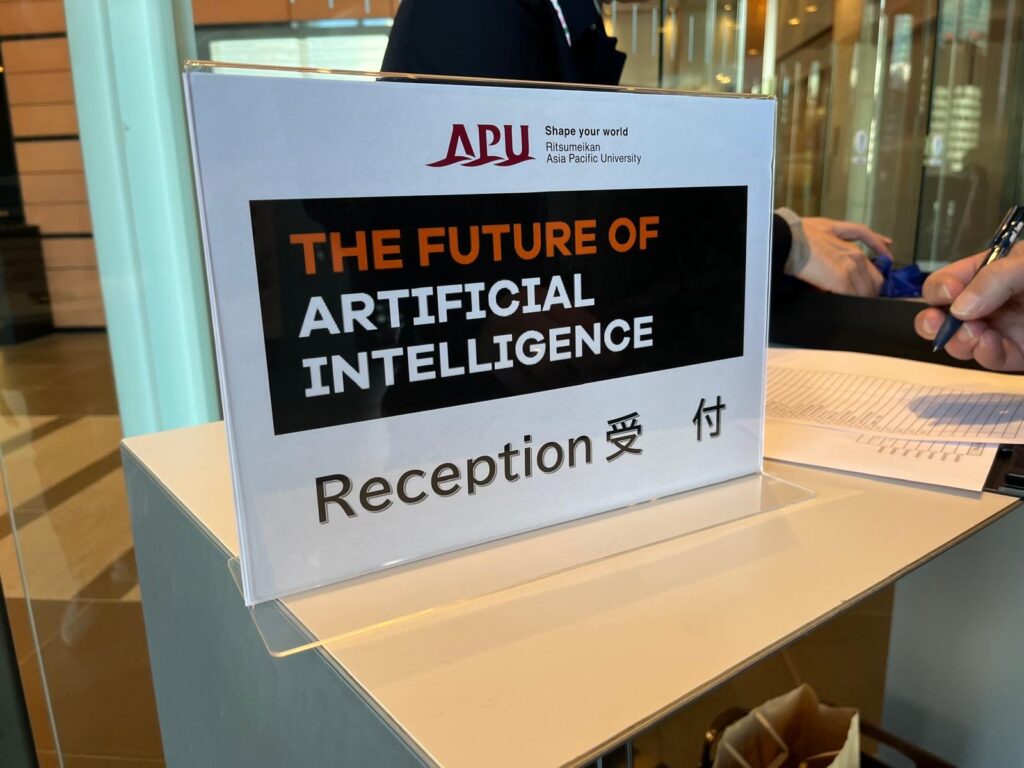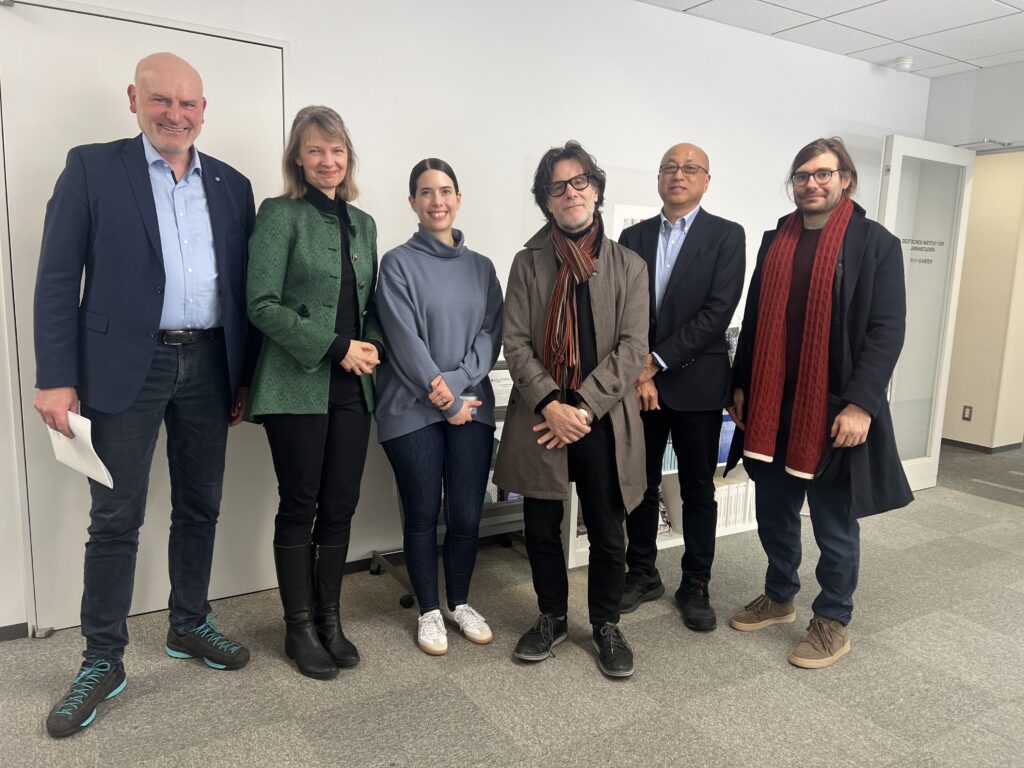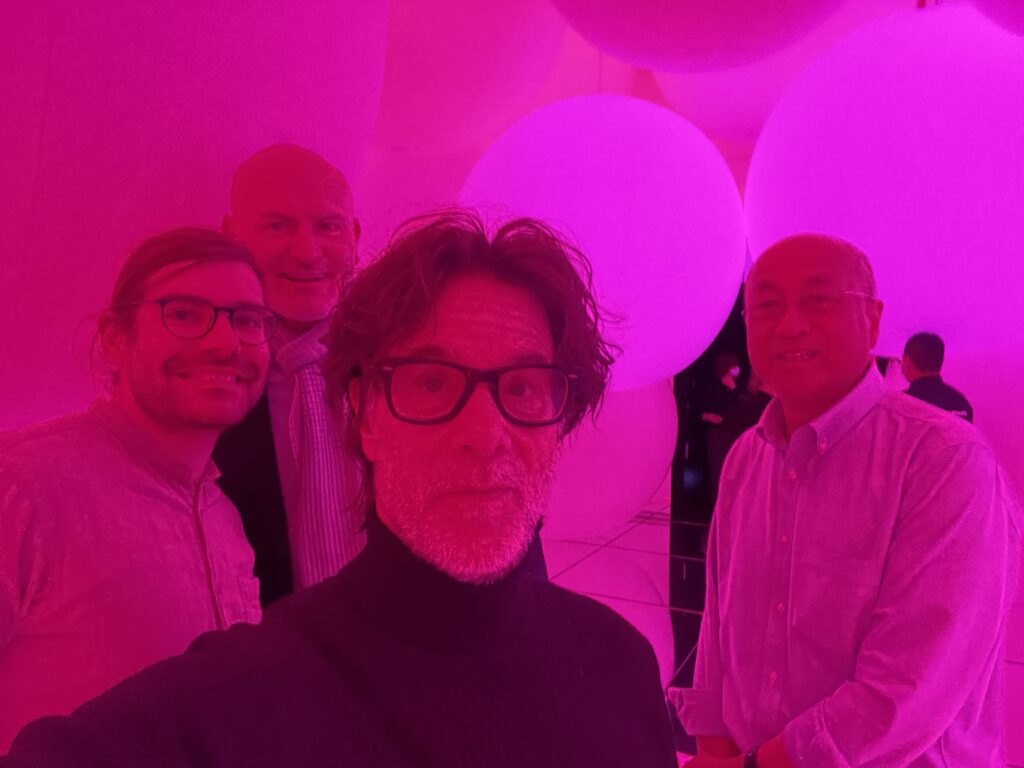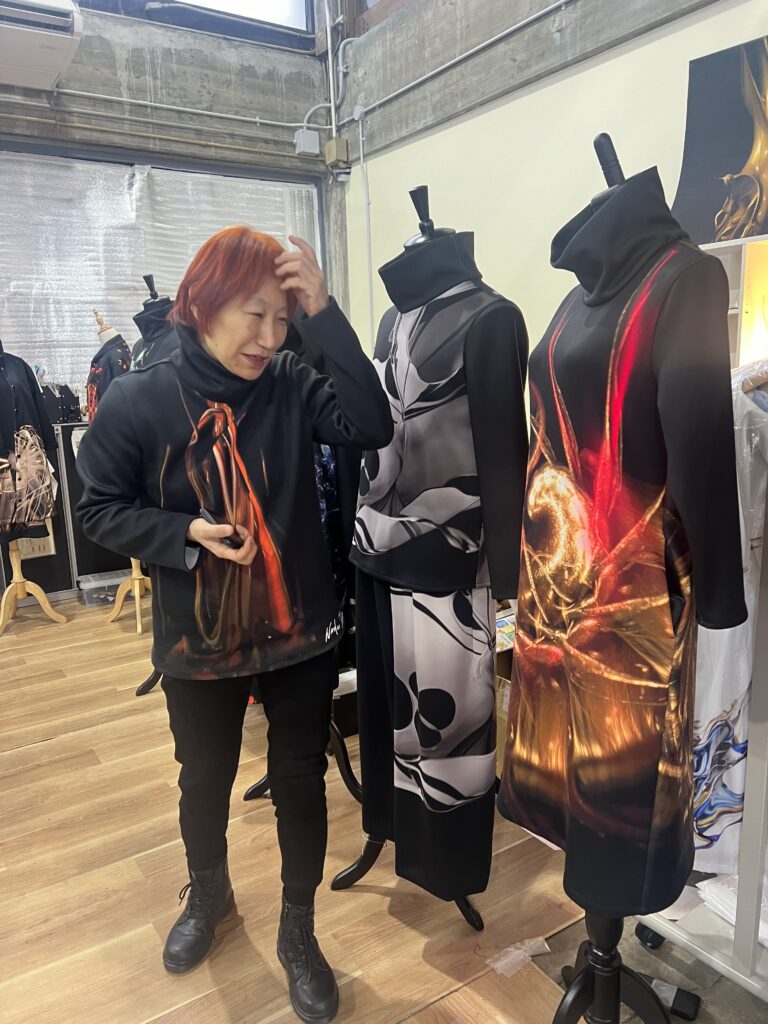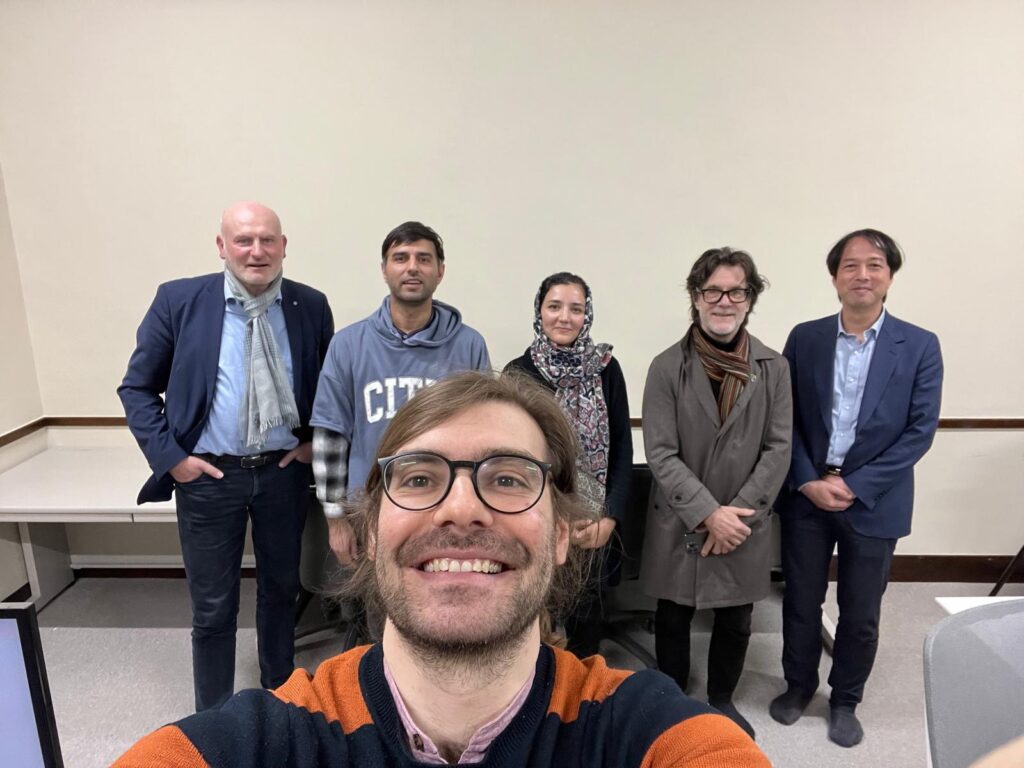Expanding Cultures of Research and Governance in the Innovation Era
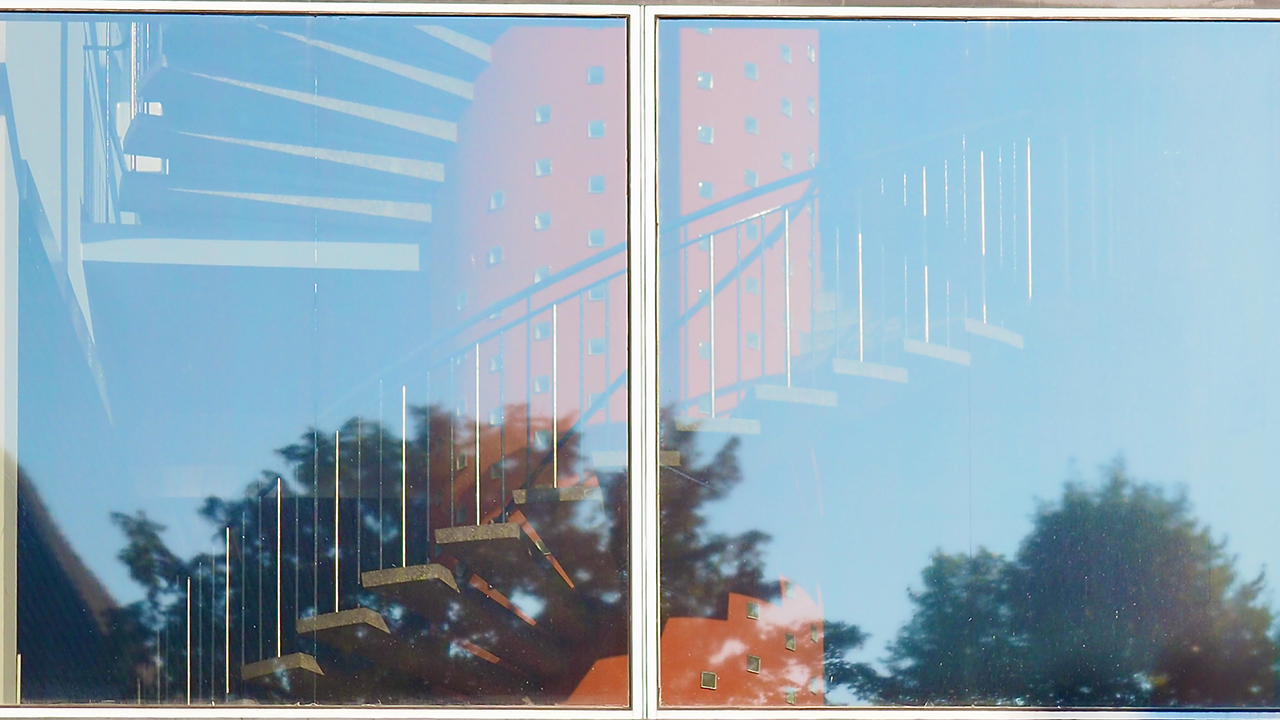
NINA FRAHM
My short-term fellowship kicked off with a KHK c:o/re workshop exploring the 2025 thematic field ‘expanded science and technology studies (STS)’. As Stefan Böschen explained at the beginning of the session, key questions guiding work in this field were how to study and make sense of increasingly hybrid forms of knowledge production in contemporary research and technological development. Expanding well beyond traditional cultures of science and engineering, research today reflects an imperative to integrate heterogeneous actors, diverse epistemic backgrounds and material practices, and a plurality of economic and political interests. On the one hand, this hybridization of research is driven by expectations for research to become more innovative – to produce new knowledge and technological tools at ever-greater speed and scale. On the other hand, it is a response to a crisis of scientific authority and narratives of technoscientific progress – producing corollary demands to democratize research through greater inclusion of society, stakeholders, and the wider public. During the workshop, we discussed different avenues through which STS can study, meaningfully engage in, and, perhaps, even contribute to critique of this trend and its dynamics. Might expanded forms of scientific and technological production also require expansion of analytical perspectives, methodological tools, types of collaboration, and vocabularies of critique in STS?
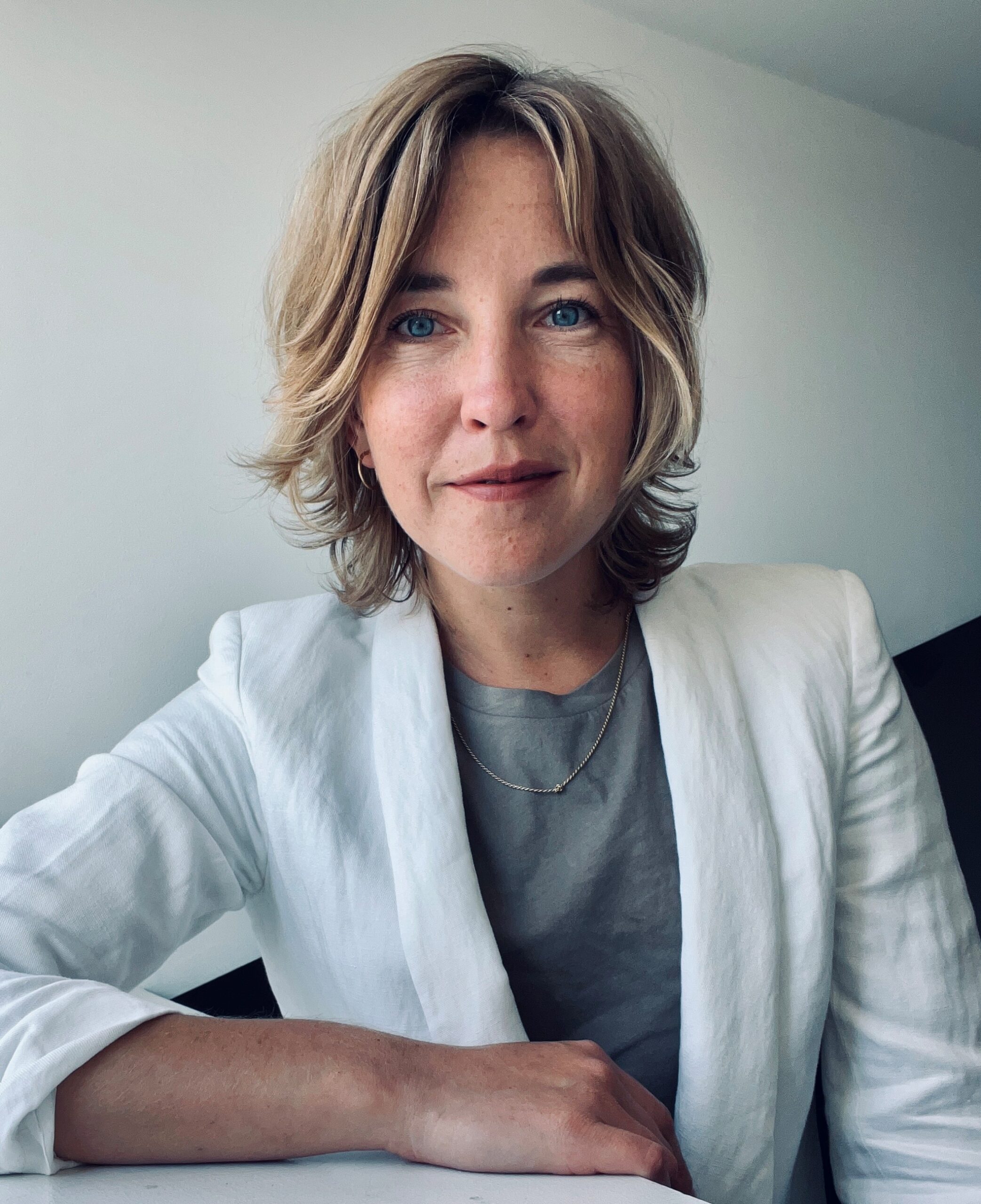
Nina Frahm
Nina Frahm is a postdoc at the Department for Digital Design and Information Studies, Aarhus University. Grounded in Science and Technology Studies (STS), she critically examines policies and governance approaches for innovation across countries, institutions, and technoscientific domains.
During my lecture at KHK c:o/re a few hours later, I argued that STS research into changing cultures of technoscience indeed should expand to studying equally important transformations in the governance of science and technology – in fact, changes in one rarely occur without changes in the other. My research over the last couple of years has closely followed recent shifts in the ways public policies frame the governance of technoscience, and in particular, which frameworks and instruments have been put into practice to achieve a greater inclusion of society in innovation processes. In the past, science and technology policy emphasized a ‘social contract with science’ and a hands-off, hidden role of the state in the production and governance of technological innovation1. Today, however, we witness governments and public institutions openly embracing innovation imperatives and policies to support the development of innovative technologies beyond science alone. Yet, promises on part of policy to achieve social progress and wellbeing through investments in innovation also face the challenge to legitimize public investments in high-risk, highly uncertain research and development. A key task for the ‘entrepreneurial state’2 is hence to produce visions of innovation as a res publica – a thing that can be produced and governed by society and according to its rules.
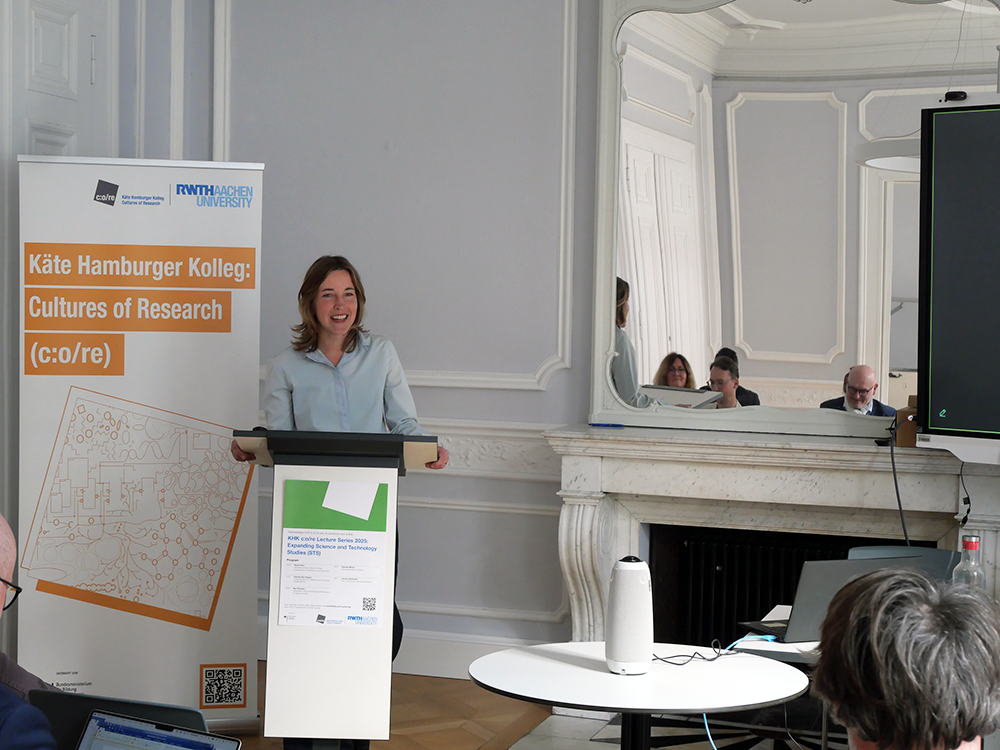
A new spirit of technoscience
The public turn to innovation in the 21st century is characterized by a ‘new spirit of technoscience’3 in which 20th century governance paradigms are turned upside down. Rather than following linear models of innovation, ‘techno-fix’ logics, and ideals for the self-governance of research and development, policies advance frames of technoscientific governance in which the public is given a key role to control innovation pathways and to fix potential problems for society upstream4. The new spirit advances a variety of frameworks to integrate the public in the development and governance of innovation, such as Bioethics, ‘Responsible Research and Innovation’, Open Science, or ‘Mission oriented Innovation’. Different tools are mobilized by policy to put such frameworks into practice, ranging from ethics committees and expert advisory boards to public engagement exercises, citizen deliberations, or co-creation processes, to name but a few.
While all these tools are geared toward ‘opening up’ technoscientific development and governance, each of them follows a particular idea of who the public is and why it should be included, how it can participate and be represented in technoscientific development and governance, through which means, and for what ends. As my research on the governance of emerging neurotechnologies5 and AI6 has shown, differences in governance frameworks and tools can be traced to culturally situated ideals of democracy that vary greatly across contexts. For instance, US approaches to innovation governance are marked by liberal-technocratic ideals of democracy as deliberations around new technologies are often delegated to experts from science, the law, or philosophy. Here, responsibility for good governance of innovation pathways is located within the individual researcher, engineer, and end-user. The EU, in turn, has experimented with more direct and deliberative forms of democracy in which the public participates directly in settling norms and principles and in which governance responsibility is collectivized along the entire innovation process, including public institutions, scientists, actors in R&D, entrepreneurs, as well as citizens. Whereas both approaches follow long-held scripts, or fictions7, of democratic procedures and practices, they also considerably re-order the relationship between publics and technoscience, particularly when it comes to the distribution of authority to reason on emerging technologies and to take decisions for their governance.

Repertoires for expansion
Expansions in the role of the state and public institutions in the production of innovation are, hence, closely related to expanding the governance of technoscience to new types of publics, forms of expertise, and practices rooted in situated imaginaries of democratic sovereignty and self-rule. To study this dynamic relationship between changing forms of technoscientific production and governance, STS offers the rich analytical language of ‘interactional co-production’ which has been tried and tested in numerous case-studies that illustrate the complexity and diversity of accommodations between science, technology, and society8. This analytical approach allows us to symmetrically trace how changes in the ways knowledge is produced and technology developed – in changing epistemic and material order – simultaneously reflect changes in democratic order regarding the power to reason on and govern science and technology in the name of society.
Such analysis encourages us to direct our critical eye beyond the discourses and practices of scientists and engineers to those places and settings which tend to be overlooked in public debates and appraisal of innovation, such as ethics advisory bodies or citizen panels. Next to interrogating their role in the co-production of socio-technical imaginaries, STS can expand analysis to conceptualizing their importance in re-producing imaginaries of democracy and in re-configuring them for the innovation era. As Jan-Peter Voß has argued, “a lot of more work is required to create robust links between empirical studies of how public engagement is conceptualized and done in various ways and the basic presuppositions and tenets of political theories describing specific ways of how ‘society’ or ‘the people’ as a whole become articulated and how the public speaks.”9 In a time where diagnoses of a ‘crisis of democracy’ are permeating the headlines and a shared sense of democratic values seems to be waning, such work is ever more important. But it can also feel uncomfortable as it contributes to further pluralizing, rather than stabilizing, taken for granted understandings of democracy and democratic practice. Doing this work requires institutional spaces that are open for expansion – spaces like KHK c:o/re where interdisciplinarity, curiosity, and intellectual courage are cultivated and cherished. In the workshop, during my lecture, and in different encounters with fellows, I have experienced how ‘expanded STS’ is not just a scholarly ambition but a mode of doing research and of thinking together that is already very much alive. And although every expansion has a limit, I look forward to further stretching it with colleagues at KHK c:o/re and beyond.
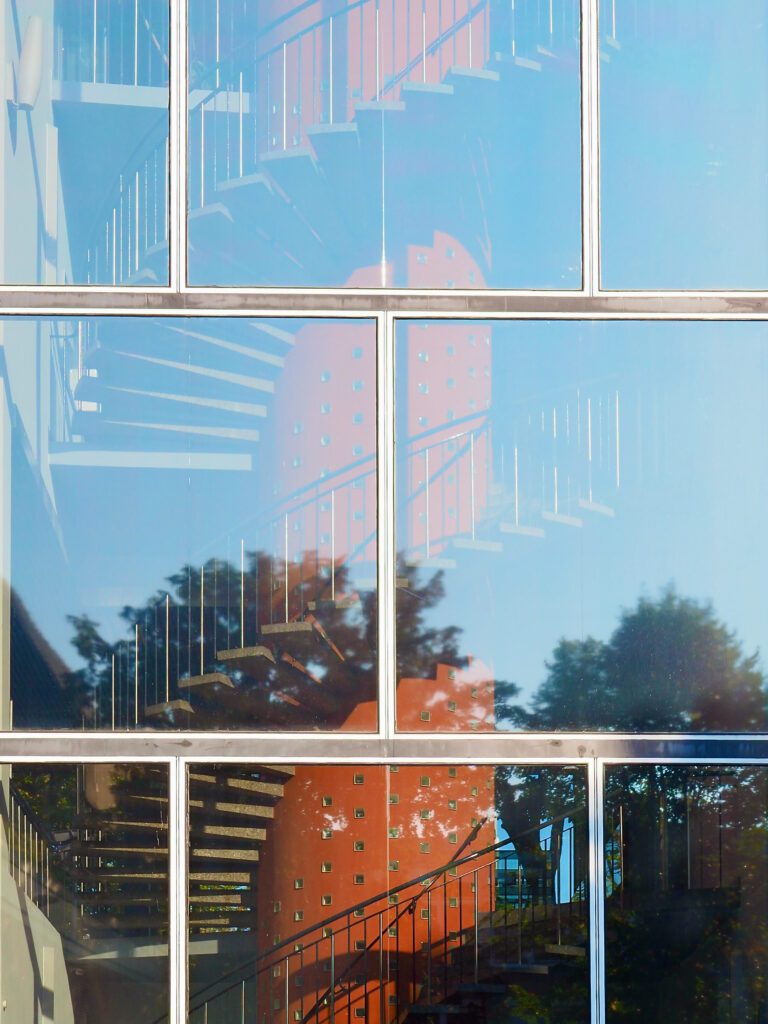
References
1 Pfotenhauer, S. M., and Juhl, J. (2017). Innovation and the Political State: Beyond the Myth of Technologies and Markets. In Critical Studies of Innovation: Alternative Approaches to the Pro-Innovation Bias, edited by Benoît Godin and Dominique Vinck, 68–94. Cheltenham, England: Edward Elgar. 68–94. https://doi.org/10.4337/9781785367229.00012 .; Block, F. (2008). Swimming Against the Current: The Rise of a Hidden Developmental State in the United States. Politics & Society, 36(2), 169-206. https://doi.org/10.1177/003232920831873
.
2 Mazzucato, M. (2018). The entrepreneurial state. Penguin Books.
3 Doezema, T. and Frahm, N. (2023). The New Spirit of Technoscience: Reformulating STS Critique and Engagement. Journal of Responsible Innovation, Vol. 10(1). doi: 10.1080/23299460.2023.2281112
4 Frahm, N., Doezema, T., & Pfotenhauer, S. (2021). Fixing Technology with Society: The Coproduction of Democratic Deficits and Responsible Innovation at the OECD and the European Commission. Science, Technology, & Human Values, 47(1), 174-216. https://doi.org/10.1177/0162243921999100.
5 Frahm, N. (2022) Soft Constitutions: Co-producing Neuro-Innovation and Society in the US, EU, and OECD. PhD Dissertation, Technical University Munich.
6 Frahm, N. and Schiœlin, K. (2023) Toward an ‘Ever Closer Union’: The Making of AI-Ethics in the EU. STS Encounters, Vol. 15(2).
7 Ezrahi, Y. (2012) Imagined Democracies: Necessary Political Fictions. Cambridge: Cambridge University Press.
8 Jasanoff, S. (2005) Designs on Nature: Science and Democracy in Europe and the United States. Princeton & Oxford: Princeton Unviersity Press; Laurent, B. (2022) European objects: the troubled dreams of harmonization. Cambridge, MA: The MIT Press; Parthasarathy, S. (2017). Patent Politics: Life Forms, Markets, and the Public Interest in the United States and Europe. Chicago: University of Chicago Press. https://doi.org/10.7208/9780226437996.
9 Voß, Jan-Peter (2019) Re-making the modern constitution: The case for an observatory on public engagement practices. In: Simon, D., Kuhlmann, S., Stamm, I., Canzler, W. (eds.) (2019): Handbook of Science and Public Policy. Cheltenham: Edward Elgar.
Quo vadis, Cultures of Research?
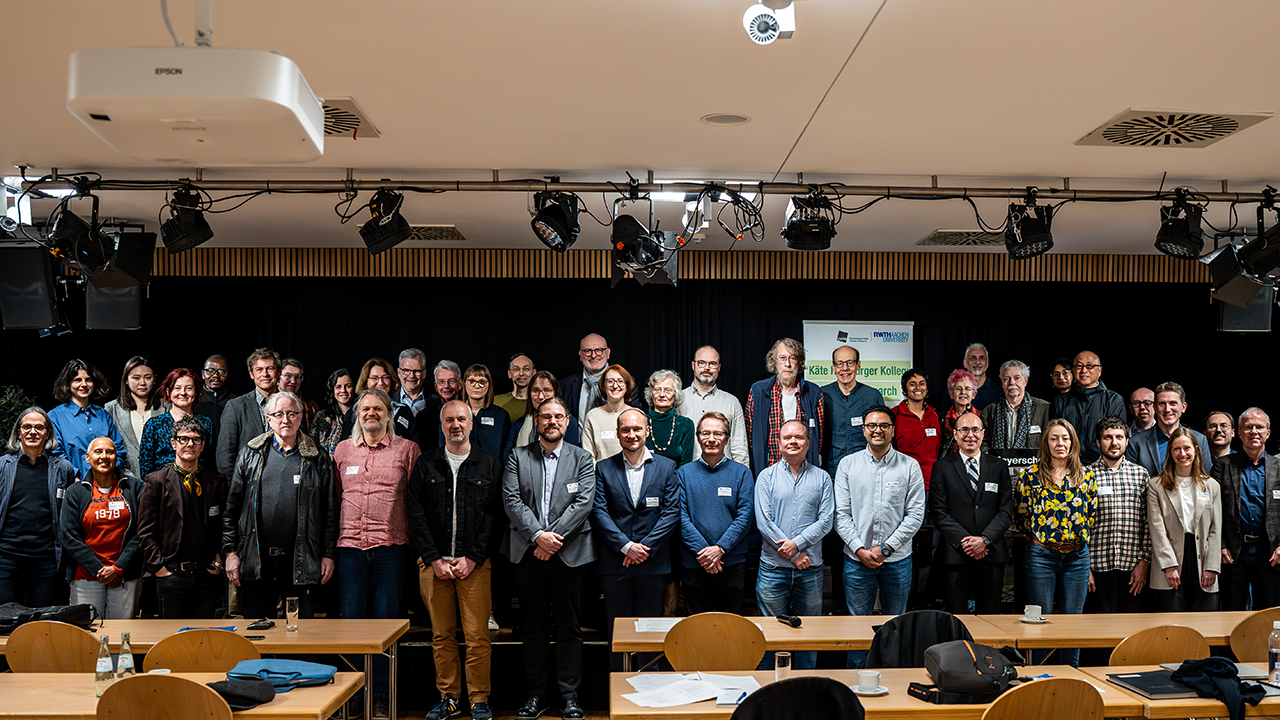
ALIN OLTEANU AND THE C:O/RE TEAM
The Käte Hamburger Kolleg: Cultures of Research (c:o/re) celebrated itself, as it completed the first 4-year cycle of funding and is now successfully entering a second funding cycle. The center is funded by the German Federal Ministry of Education and Research (BMBF) within its framework program for the humanities and social sciences “Shaping the Future”. On March 25-27, 2025, we were delighted to get together for a conference targeted on the specific but encompassing theme of this center, namely Cultures of Research, which, we dare say, has recently become a more prominent academic topic due to the center’s efforts.
Who are we? All of us – c:o/re team members and fellows, both current and alumni, with a scientific advisory board that has steered the center’s activities. Almost all c:o/re fellows, who have carried out research here over four years, were present. This enabled a fascinating, for us, intersectional and inter-paradigmatic academic dialogue, the kind that makes the object of Cultures of Research. Chaired by the c:o/re team, fellows and scientific advisory board members have presented their research in approximately 40 talks. It was a most enjoyable opportunity for us to discuss, in hindsight, what emerged from four years of sustained academic work, having started from scratch, and how we see the center evolving in the future.
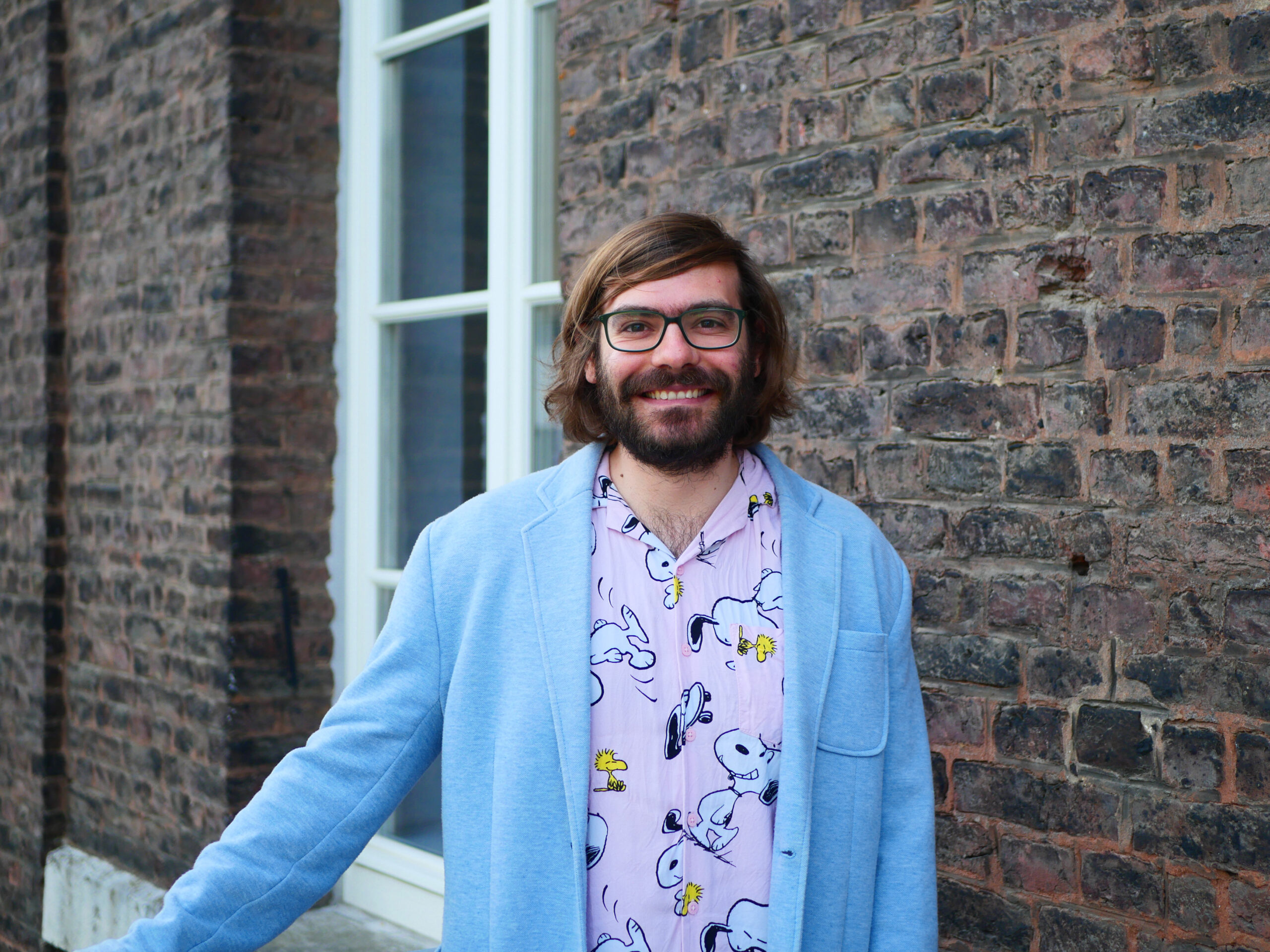
Alin Olteanu
Alin Olteanu is an Associate Professor of Semiotics at Shanghai International Studies University. Until July 2024, he worked as a a postdoctoral researcher and publications coordinator at the KHK c:o/re.
Many of us, team members and alumni fellows, deem the conference not just useful, but necessary. c:o/re has become an important dimension in the work of several of us, intellectually and institutionally. As such, gathering altogether is as important as the regular meeting of many themed academic associations. c:o/re has opened new career opportunities and perspectives for several of us. The center was formative and instrumental in the professional development of many, not just fostering the next step on a linear trajectory, such as from postdoc to tenure, but also enabling shifts in research focus, such as from engineering to science and technology studies. A small minority of alumni fellows has even found long-term academic placement at RWTH Aachen University. Even for such colleagues, who never fully left the center, the conference was needed, to reconnect with others. Many remark that it was particularly interesting to have the chance to dialog with the scientific advisory board in a collective, transparent and friendly setting.




c:o/re directors Professors Gabriele Gramelsberger and Stefan Böschen started off the conference, welcoming what was a heterogenous but familiar gathering. They shared their views on the first four years of this center, the main research topics that channel its work and how these evolved. This ushered in the first keynote, “Historicizing Epistemology” by Hans-Jörg Rheinberger, a fitting way to start off a Cultures of Research conference, setting the optics for further conversation.

The conference was structured thematically in eight panels under three main c:o/re study foci, as follows. To address the theme of Change of research practices, we organized the panels Dealing with Complexity and Digitalization of Science. The theme Organizational transformations in science was addressed through panels on Lifelikeness, “Expanded STS” & Euregio, Freedom of Research, Art and Research. The Historical and intercultural comparison of varieties of science was organized into the panels Historicizing Science and Varieties of Science. This thematic organization results from a dialectics that is both top-down and bottom-up, to follow the research center’s rationale and mission, which have been channeled, in time, through the research it produced, one step at a time.

Being part of the c:o/re team, we feel privileged to be in a position to listen to the various studies that have emerged from this research center, observing how they have shaped the center and how its entailed research topics have changed over time. To illustrate, for someone who has been a part of this four-year effort throughout, it was fascinating to listen to dialogues among the scientific advisory board with and across four generations of fellows, who seldomly knew each other. This was not just a meeting of individual scholars, but of academic groups that have crystallized during their respective fellowships, having each developed their research subculture. In this exercise, we saw first-hand the importance of institutional academic funding structured in this Käte Hamburger Kolleg format. Until now, we have worked with these scholars individually and in well-focused formats, such as thematically organized fellow cohorts.

Our festive conference opened the doors to intersectional dialogue, releasing the, however interdisciplinary, strictly focused work of individuals and clusters within c:o/re into a productive and creative chaos. As some fellows attest, while at first glimpse the range of topics brought together under the roof of the center, as seen in this conference, may seem unrelated, they epistemologically connect very well. It is such facilitating of interdisciplinary research that positioned some fellows to discover that the issues they tackle are of interest beyond the disciplinary confines within which they each operate.
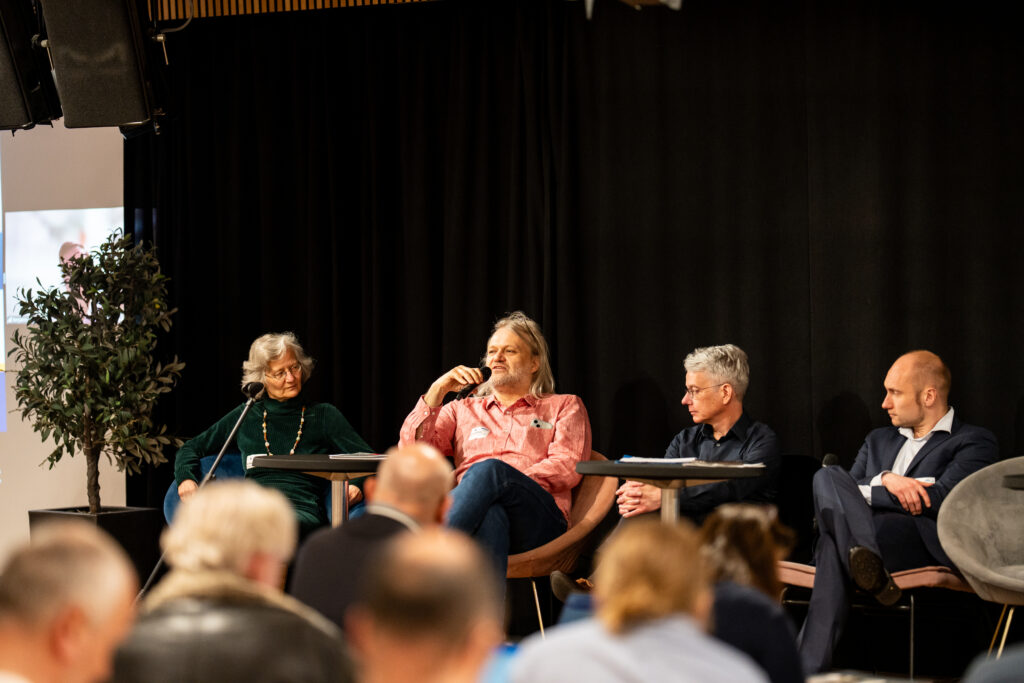
We see c:o/re having enabled new and unexpected quo vadis reflections on Cultures of Research, something we can observe regarding the topic of “Expanded STS”, a c:o/re coinage that is drawing growing attention, as an anticipating consideration on scientific and technological futures. Actually, we contend that the conference panel dedicated to Expanded STS demonstrated how much STS is shaped by ‘othering’ and internal demarcation between disciplines (especially the sociology and philosophy of science). However, at the same time, our conversations reveal not only that a multitude of approaches co-exist, dealing with these boundaries differently and more productively, but also that a growing scholarly community is willing to explore new interdisciplinary avenues for cooperation.
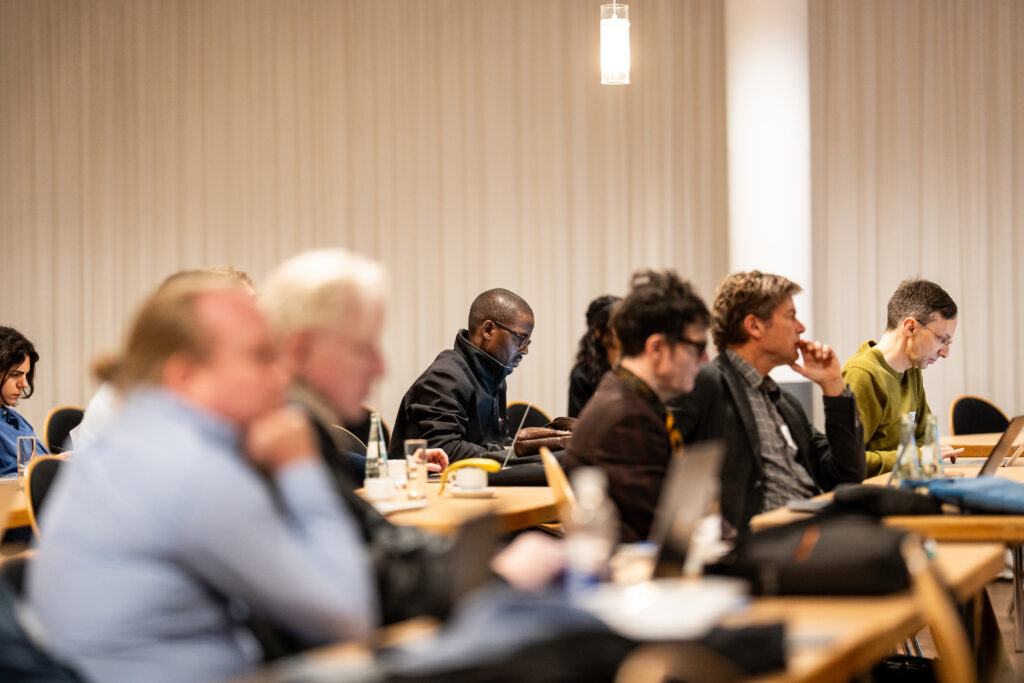
We do not want to give the wrong impression that the research carried out at c:o/re is free of contradicting or even controversies – far from it. The conference has seen plenty of contradictory arguments and contestations among the speakers, in a way that accounts for two important matters for any research institute, namely that (1) this center is a platform for free academic debate and that (2) the approaches it hosts are epistemically compatible (that two positions on a topic are contradictory implies that they are mutually relevant). Actually, the one claim on which we found total agreement is that Freedom of Research is currently one of the most important issues for the academe, as well as society broadly. All fellows, team and scientific advisory board members see the urgent need of freely (!) discussing the freedom of scholars in the current context when sociotechnical shifts have consequences for the freedom of speech and expression.

Of course, discussion on what freedom in research is, how it is practiced and how it should be supported institutionally was fiery, encompassing a broad variety of perspectives. Overall, there is agreement that this is how an exercise in academic freedom looks like: we are free and enabled institutionally to contradict each other. We note that the Cultures of Research conference took place shortly after a new US administration started exercising pressure on scientists and universities. Political pressure on academia will undoubtedly constitute a main concern for c:o/re in its second cycle of funding, shaping its future development, as we hope and anticipate that it will shape the future development of philosophical and social inquiry on technology in general.
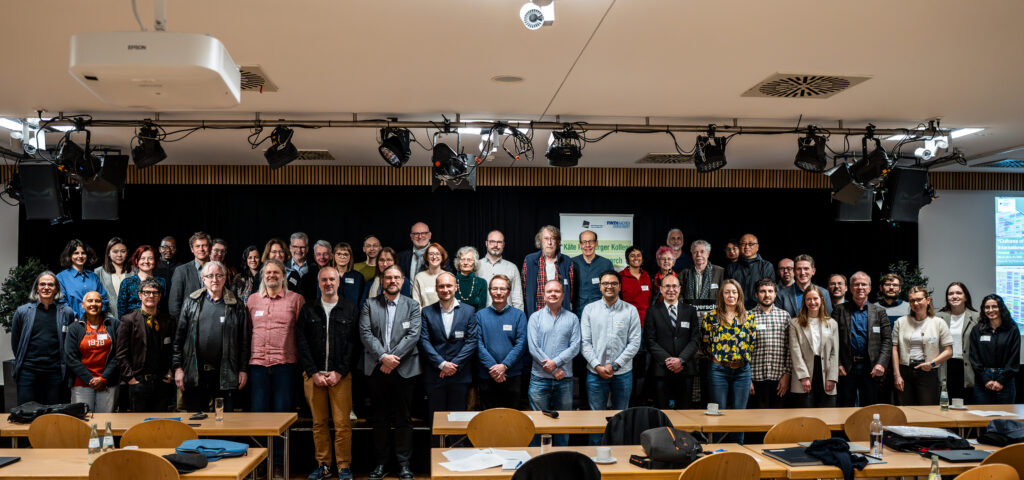
Unless otherwise noted, photos by Christian van’t Hoen.
The program with all speakers and titles of the conference can be found in this document.
“[T]here really isn’t a clear distinction between the analog and the digital” – Interview with Lori Emerson
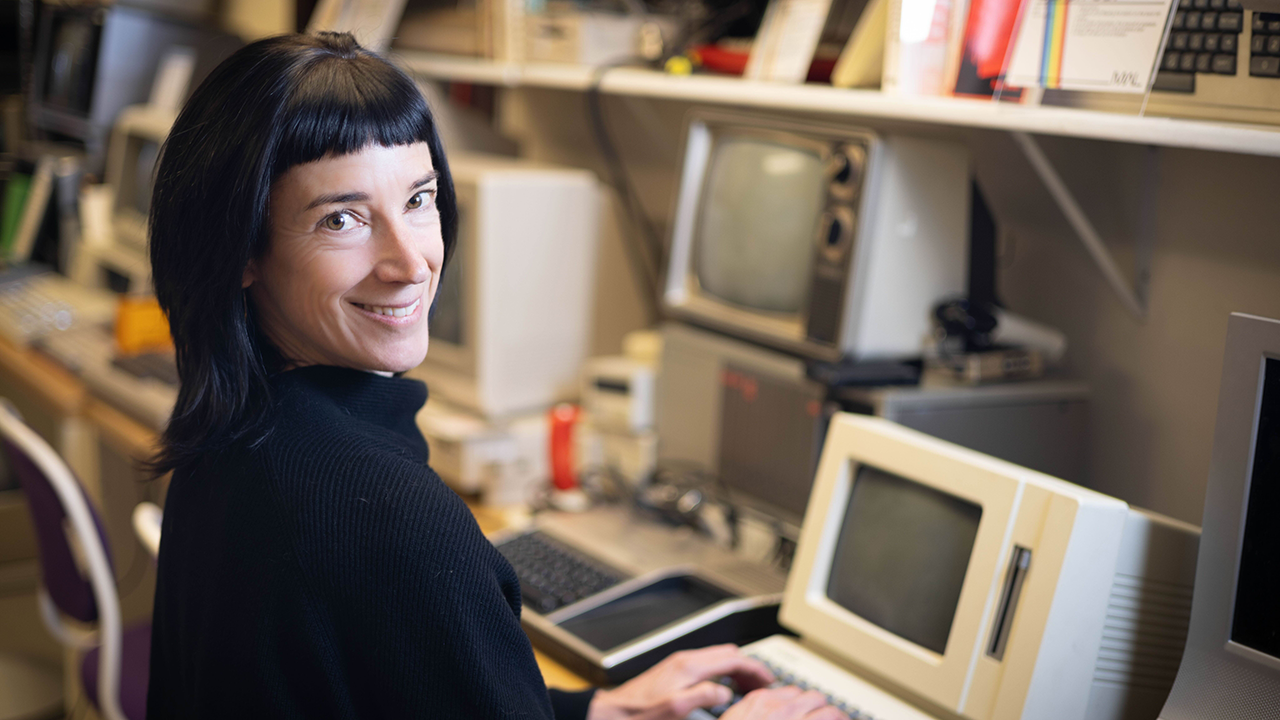
As part of the interdisciplinary workshop “After Networks: Reframing Scale, Reimagining Connections”, which will take place at the SuperC of RWTH Aachen University on April 16 and 17, 2025, media scholar Lori Emerson will come to Aachen and give a keynote speech about her new book “Other Networks: A Radical Technology Sourcebook” (Anthology Editions, 2025). We asked her a few questions in advance to get a better understanding of how she thinks about and works with networks.
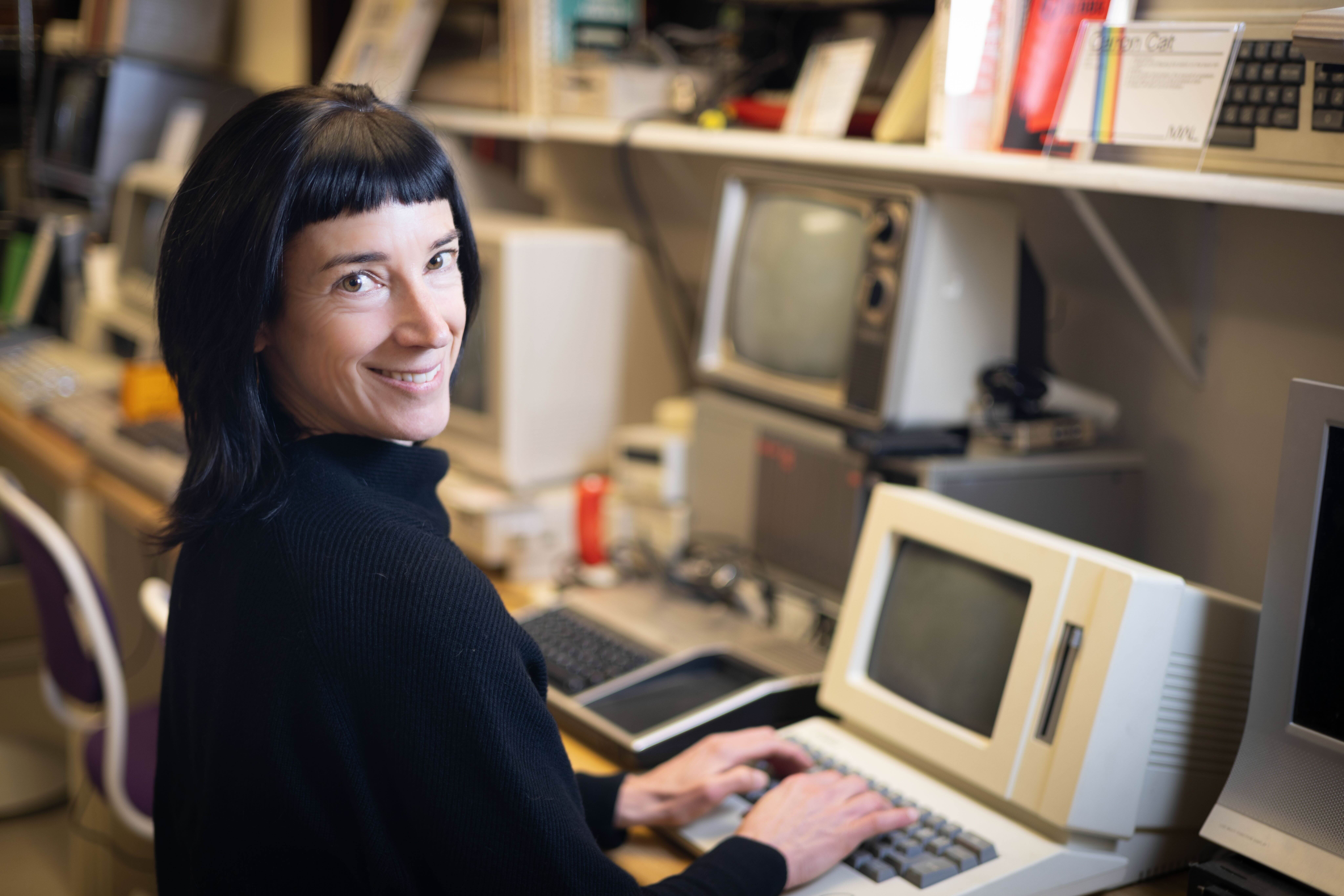
Lori Emerson
Lori Emerson is an Associate Professor of Media Studies and Associate Chair of Graduate Studies at the University of Colorado Boulder. She is also the Founding Director of the Media Archaeology Lab. Find out more on her website.
In your new book Other Networks: A Radical Technology Sourcebook, you present networks that existed before or outside of the internet, digital as well as analog. What would you say do all of these different models of networks have in common?
Many of the networks in Other Networks began as small experiments by a few individuals that didn’t necessarily have aspirations to make sure these networks had a global reach, or that these networks could not be replicated by other individuals, or that they would overtake every other kind of communication at a distance. More, because of their relative simplicity, most of these networks can be recreated today for small groups of people. My hope is that, along with my colleague Dr. libi striegl who is the Managing Director of the Media Archaeology Lab (the lab I direct and that has supported a lot of the research behind Other Networks), we will continue to create “recipes” for building small “other networks.” We have already published a small pamphlet called Build Your Own Mini FM Transmitter that very clearly and carefully walks people who have no background at all in electronics through the process of making what’s basically a micro-broadcasting station.

Do you have a favorite network example?
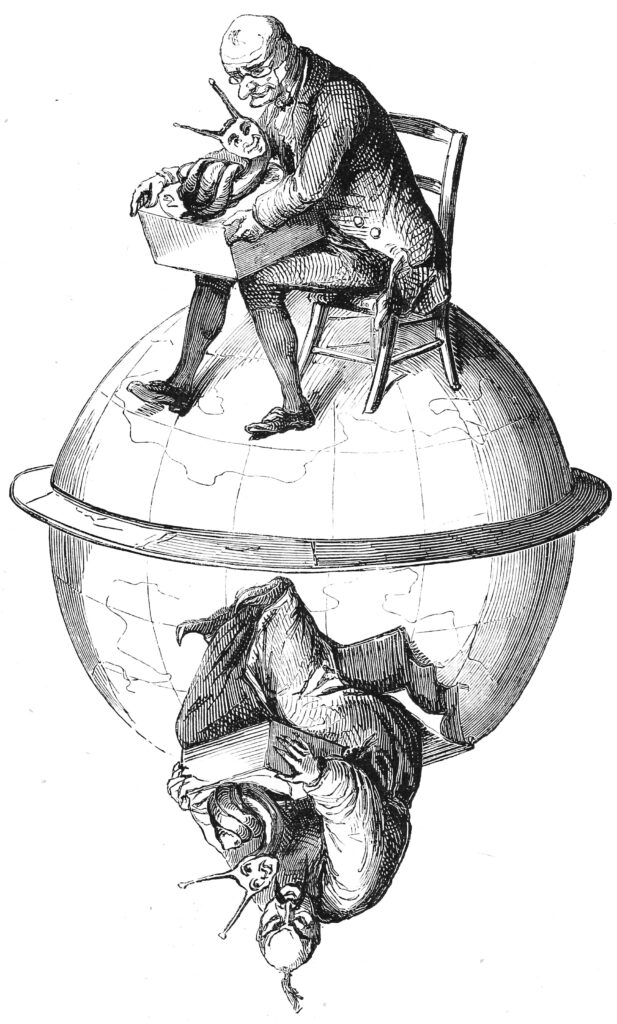
I am fond of all the networks in Other Networks! But one particular network I like to talk about is an example of an imaginary network: the pasilalinic-sympathetic compass, also referred to as ‘snail telegraph.’ This network was created by French occultist Jacques-Toussaint Benoît to demonstrate that snails are capable of instantaneously and wirelessly transmitting messages to each other across any distance. Benoît’s theory was that in the course of mating snails exchange so-called “sympathetic fluids” which creates a lifelong telepathic bond which also enables them to communicate with each other. He believed he could induce snails to transmit messages faster and more reliably than by wired telegraph by placing a snail on top of a letter and then, with the prodding of an electric charge, the snail would transmit the letter to another snail placed at some distance. The pasilalinic-sympathetic compass itself consisted of twenty-four different wooden structures containing a zinc bowl, cloth that had been soaked in copper sulphate, and a snail glued to the bottom of the bowl. Benoît unsuccessfully demonstrated the snail telegraph to a journalist from La Presse, Jules Allix, in October 1850.
What is the materiality of a network? In your new book, you separated them into four categories: Wireless, Wired, Hybrid and Imaginary. How was the process of organizing the networks into these different categories? Do you think it helps to visualize how a network can be materialized?
Creating a taxonomy for organizing these other networks was the most challenging part of writing Other Networks and, like any taxonomy, the system I settled on is still far from perfect. It took me many months to come up with a system for organizing networks according to their underlying infrastructure and that didn’t simply replicate historiographic conventions of accounting for technological inventions chronologically or by inventor. In other words, I wanted to underscore that networks emerge, disappear, and re-emerge slightly configured or re-combined over and over again; they also are rarely the work of a single person. More, accounting for networks in terms of chronology or “inventor” usually distracts us from seeing networks as material. Today, despite all the excellent work that has been done to reveal the material underpinnings of the internet (from its undersea cables to cable landing stations etc.), still the vast majority of people don’t know where the internet is, how it works, or where it came from. It might as well be immaterial! By contrast, I wanted to make it clear in Other Networks how, for example, there’s radio in the internet; that radio is part of the electromagnetic spectrum; that, even though we can’t see it, the electromagnetic spectrum is a ubiquitous natural resource; and that we as individuals and as communities can learn how to access this natural resource. Perhaps it’s old fashioned to say so, but I still believe that understanding the materiality of networks and how they work empowers us to build our own networks.

Where do you see the future of networks? In the digital or analog space?
One thing that became clear to me in the course of doing research for Other Networks is that there really isn’t a clear distinction between the analog and the digital like I was taught in graduate school. Telegraph communications that use, for example, morse code and that are transmitted over telegraph or telephone wires are digital in the sense that they are pulses of electricity in much the same way that digital computers use pulses of electricity to indicate 1’s and 0’s. In this sense, I think the future of networks is less about whether they’re analog or digital and more about whether they are built for small, local communities; whether they are cooperatively owned rather than corporate-owned; whether they can be maintained over the long run without resorting to blackboxing; and, finally, whether they have built-in structures to resist surveillance, tracking, and monetization.
Thank you so much for the interview, Lori!
More information about the workshop, the program and registration can be found on this website.
Header photo: Jenna Maurice
Towards a Philosophy of Digitality: Gabriele Gramelsberger was awarded the K. Jon Barwise Prize
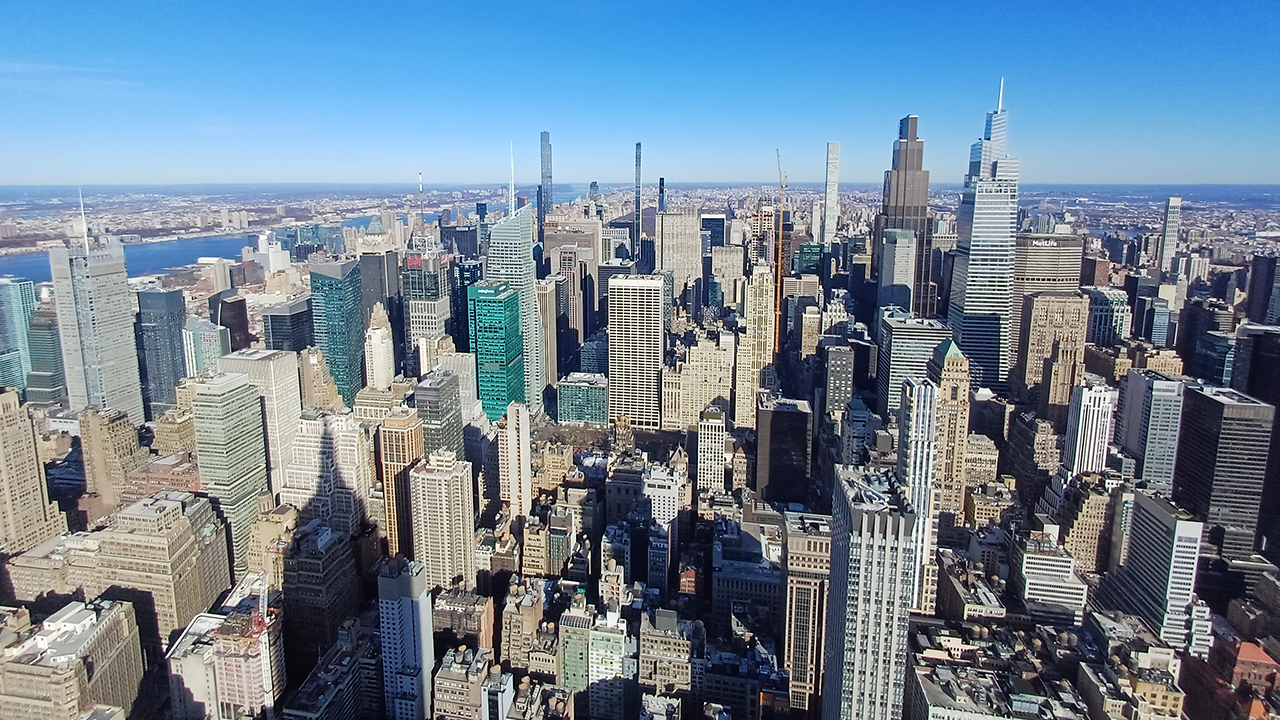
DAWID KASPROWICZ
On Thursday, January 9, 2025, KHK c:o/re director Gabriele Gramelsberger gave a lecture at the 121st annual meeting of the American Philosophical Association (APA), Eastern Division, in New York. Her lecture, titled “Philosophy of Digitality: The Origin of the Digital in Modern Philosophy”, was given in relation to the award of the K. Jon Barwise Prize by the APA in 2023 for her significant and sustained contributions to philosophy and computing.

photo credits: American Philosophical Association
Robin Hill, computer scientist from the University of Wyoming and a longtime member of the APA, introduced Prof. Gramelsberger and chaired through the session. Named after the American mathematician and philosopher K. Jon Barwise, the prize honors since 2002 scholars for their lifelong efforts in the disciplines of philosophy and computing, especially in the fields of artificial intelligence and computer ethics. Next to Prof. Gramelsberger, who received the prize for 2023, the Israelian philosopher Oron Shagrir from the Hebrew University Jerusalem received the Barwise Prize for 2024. Among the former winners of the prize are well-known philosophers such as Daniel Dennett, David Chalmers or Jack Copeland. Gabriele Gramelsberger was the third woman who won this award.
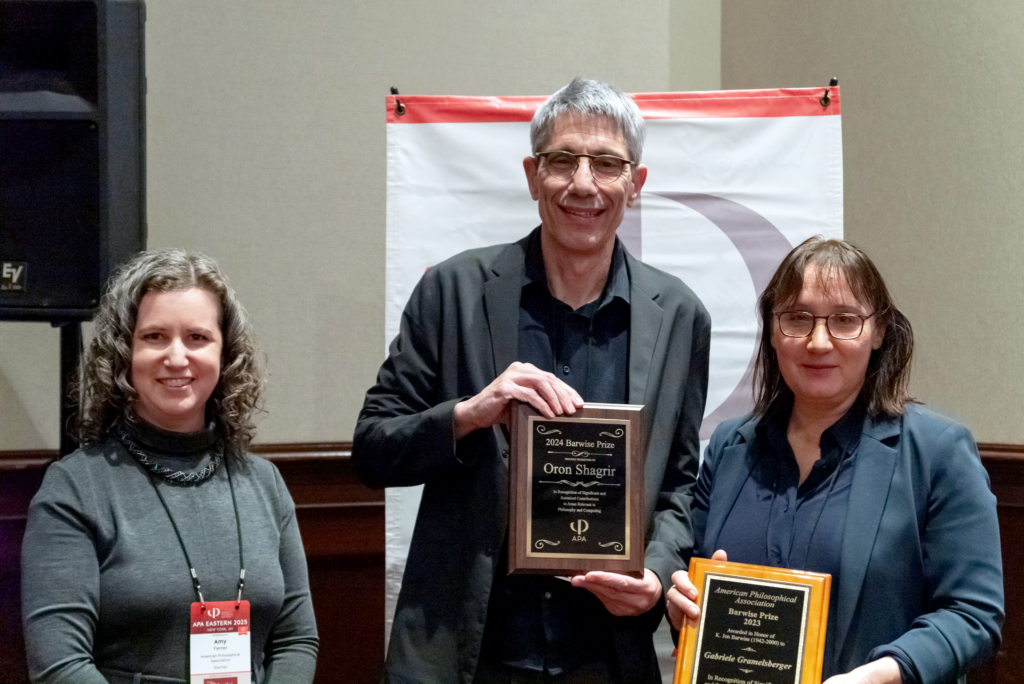
Prof. Gramelsberger presented two parts in her lecture: in the first, she introduced her conception of a philosophy of digitality since the modern age, and in the second, she highlighted some current challenges for philosophers to describe digitality as a socio-cultural phenomenon. It is not common in philosophy to relate the digital to thinkers of the modern age. In doing so, Prof. Gramelsberger began her talk with a schema how a prehistory of the digital could be written – a history that does not start with machines and technological objects, but with a reinterpretation of writings such as René Descartes’ Discourse de la méthode from 1637. In this classical book, Descartes did not only introduce a procedure how to separate right from wrong in scientific judging. Following Prof. Gramelsberger, he was also one of the first who systematically described thinking as a cognitive process, a process which could be distinguished in several steps that build up on each other. Instead of only considering the right inference from the premises (as done in syllogistic reasoning), Descartes also conceived thinking as a series of discrete steps that one has to execute appropriately to split a bigger problem into several smaller ones. It is this discrete and procedural way to describe thinking that we also find in the papers of the AI-pioneers Allan Newell and Herbert Simon and their General Problem Solver, as Prof. Gramelsberger argued.
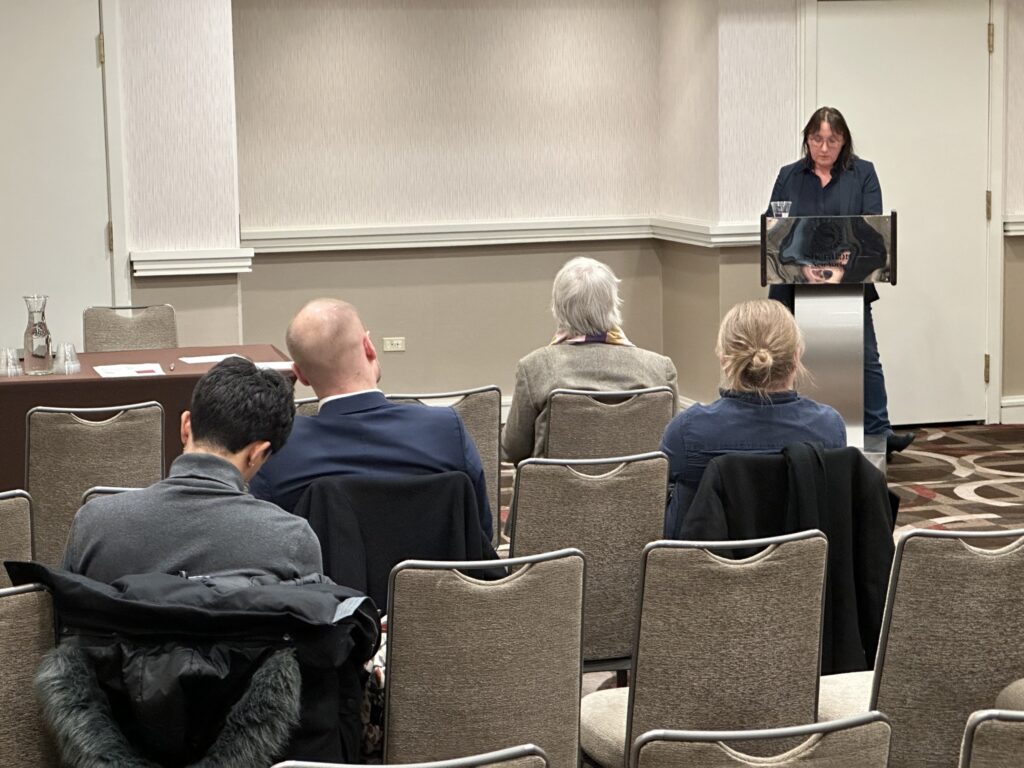
While Descartes introduced the first discretization of cognitive processes, Leibniz went further to describe cognitive operations with a symbolic system. This artificial language consisting of arithmetic, algebra and logic should constitute the adequation between the object and the concept, between the relations of objects and the judgments. In this sense, Leibniz not only introduced the symbolic order to formulate possible experiences in the real world, he was also able to replace the qualitative and substance-oriented with a formal and quantitative one. This equivalence of being with the formal calculus allowed him to extend the conditions of possible experiences into the transcendence of mathematical operations. From here, Prof. Gramelsberger argued, it is not far anymore to rule-based cognitive operations that could also be externalized – and this is exactly what pioneers of digital computers such as C. Babbage did in the 19th century (see also in Gramelsberger 2023, p. 40-44).

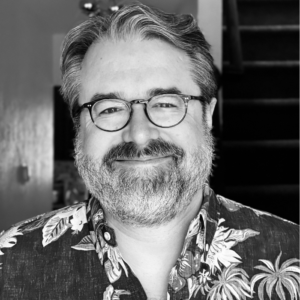
The execution of such mechanized operations happens today a billion times in a couple of seconds. Taking into consideration, as Prof. Gramelsberger highlighted, that there are more than five billion smartphones in the world, a philosophy of digitality has also to respond to digital cultures and their objects as an everyday experience of most people. In this regard, Prof. Gramelsberger presented in the second half of her talk a more critical and phenomenological approach. It is the operation of digital machines beneath our “phenomenological thresfold” that represents on the one hand a challenge for a philosophy of digitality, but on the other hand also a risk for the wellbeing of the users. In referring to the German concept of “cultural techniques” (Kulturtechniken) (Krämer and Bredekamp 2013), Prof. Gramelsberger illustrated that in cultural techniques such as writing, one always operates with discretized symbols – whether in alphabets or in the arithmetic sense. The fundamental difference with digital machines lies in the affective mode by which they address us, as the Barwise-awardee explained. Most often, the goal of social media communication would be to raise emotions, but the resources to do so are affects that are triggered beneath our threshold of intentional attention. At the end of her talk, Prof. Gramelsberger pointed sharply out to a threatening constellation where man has lost its ability to be “eccentric”, as the German philosopher Helmuth Plessner called it. Instead, in the age of an affective smartphone culture and massive data-storage (often owned by private companies), man becomes centric again and stays in one place to go through a myriad of affective-loaded communications that keep him in a loop to create even more data.
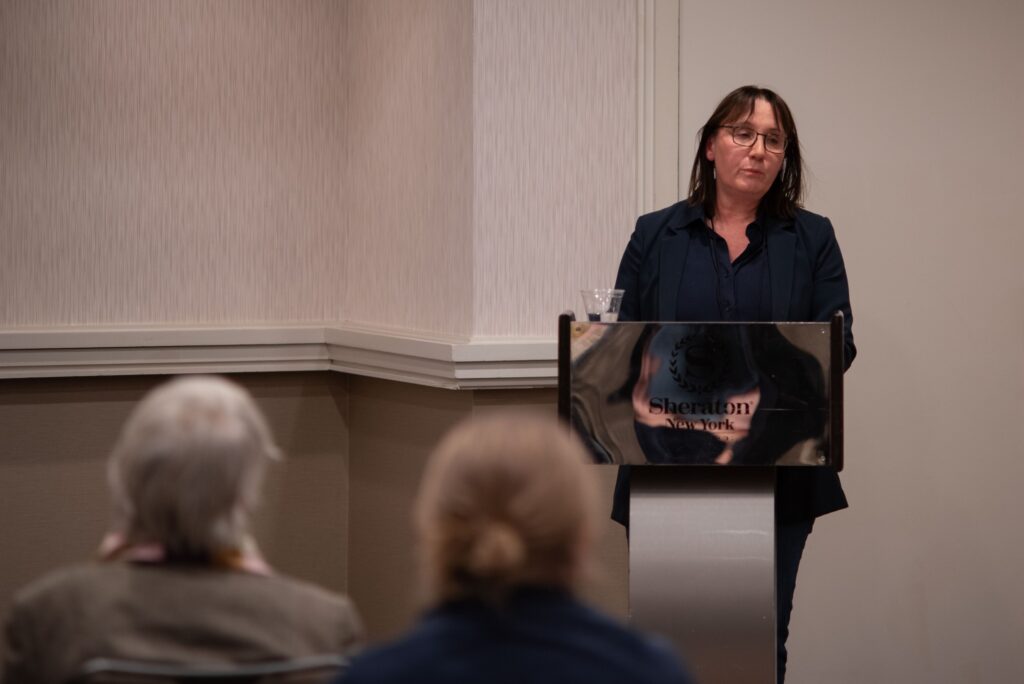
In his response to Prof. Gramelsberger’s talk, Zed Adams from the New School for Social Research in New York extracted three leading questions: These questions highlighted the relation of the analog and the digital, the question of the copy in the age of the digital, and the challenge how to describe the affective regime in our current smartphone culture. Adams offers to dig deeper into the challenge of a “Philosophy of Digitality” were also taken up vividly by the audience. Especially the distinction of affect and emotion evoked some discussions, but also the challenge how to describe the cultural impact of technologies such as AI with philosophical tools. A first answer was to find ways how to describe the less complex yet emotionally overwhelming ways we can observe in the use of social media apps. This could be a fist step to better understand how machines in the age of AI recentralize us as human beings – or decentralize us as the contingent result of data-management.
Gabriele Gramelsberger. 2023. Philosophie des Digitalen. Zur Einführung. Junius: Hamburg.
Sybille Krämer and Horst Bredekamp. 2013. Culture, Technology, Cultural Techniques – Moving Beyond Text. In: Theory, Culture & Society 30(6): 20-29. DOI: 10.1177/0263276413496287
European Dialogue: Freedom of Research and the Future of Europe in Times of Uncertainty

JANA HAMBITZER
During a day-long symposium, part of the Freedom of Research: A European Summit – Science in Times of Uncertainty, speakers and panelists explored various aspects of freedom of research and the future of Europe in the context of ongoing global crises and conflicts.
“We should not think that freedom is self-evident. Freedom is at danger in every moment, and it is fragile”. With these cautioning words, Prof. Dr Thomas Prefi, Chairman of the Charlemagne Prize Foundation, welcomed the participants of the symposium on freedom of research, which took place at the forum M in the city center of Aachen on November 5, 2024.
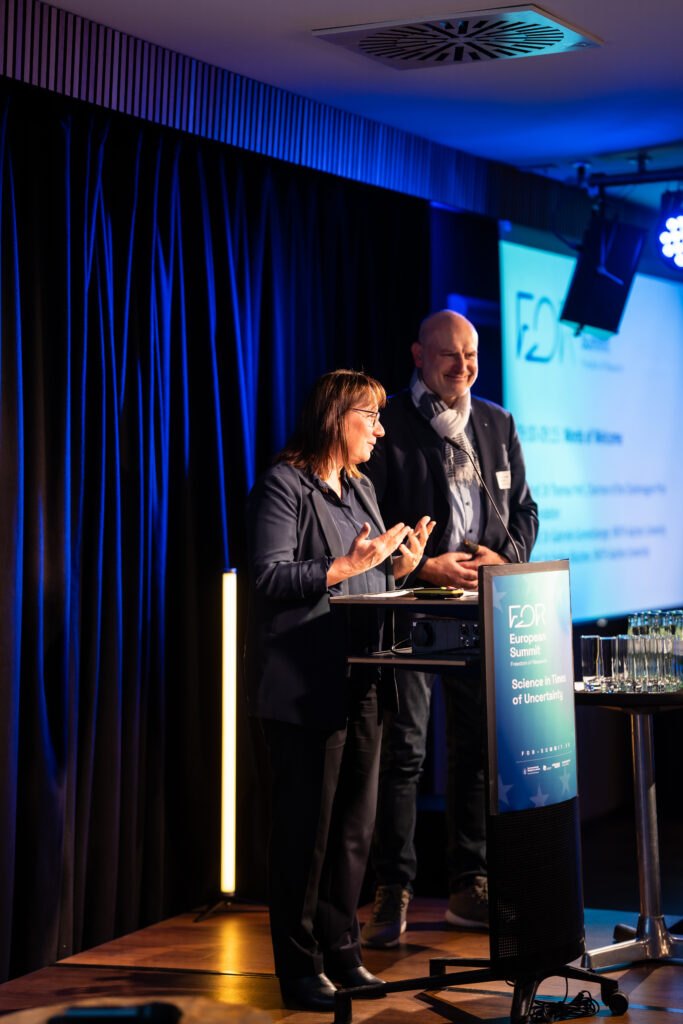
As part of the Freedom of Research: A European Summit – Research in Times of Uncertainty, the Foundation of the International Charlemagne Prize of Aachen, the Knowledge Hub and the Käte Hamburger Kolleg: Cultures of Research (c:o/re) of RWTH Aachen University jointly provided an interdisciplinary platform to discuss the crucial role of freedom in scientific, social and political contexts concerning the future of Europe with researchers, policymakers, business representatives and the public.
The aim was to critically explore different forms and practices of implementing freedom of research in line with European principles and in support of democratic governance and societal benefits. The thematic focus of the symposium was on dealing with the numerous complex crises of our time – from military conflicts to right-wing populism – as well as addressing challenges associated with new technologies such as AI and the metaverse.
Humanity and Collaboration in the Age of Emerging Technologies
The strategic importance of freedom in fostering innovation and maintaining democratic values in a globally competitive landscape was emphasized by Wibke Reincke, Senior Director and Head of Public Policy at Novo Nordisk, and Dr Jakob Greiner, Vice President of European Affairs at Deutsche Telekom AG. From an industry perspective, both speakers underscored the need for open societies that invest in innovation to ensure the continuity and growth of democratic principles.
The emergence of the metaverse and other cutting-edge technologies were discussed by Jennifer Baker, Reporter and EU Tech Influencer 2019, Elena Bascone, Charlemagne Prize Fellow 2023/24, Nadina Iacob, Digital Economy Consultant at the World Bank, and Rebekka Weiß, LL.M., Head of Regulatory Policy, Senior Manager Government Affairs, Microsoft Germany. The panelists pointed out the essential role of human-centered approaches and international collaboration in addressing the ethical and societal challenges associated with new technologies, and in shaping the metaverse according to European ideals.

The inherent tension between technological progress and the preservation of research freedom was highlighted by Prof. Dr Gabriele Gramelsberger, Director of the Käte Hamburger Kolleg: Cultures of Research (c:o/re), who raised the question of how AI is changing research. Prof. Dr Holger Hoos, Alexander von Humboldt Professor in AI and Executive Director of the AI Center at RWTH Aachen University, stated that publicly funded academic institutions must remain free from any influence of money and market pressure to foster cutting-edge research motivated solely by intellectual curiosity. Prof. Dr Benjamin Paaßen, Junior Professor for Knowledge Representation and Machine Learning at Bielefeld University, further argued that AI in research and education should only be used as a tool to complement human capabilities, rather than replace them.
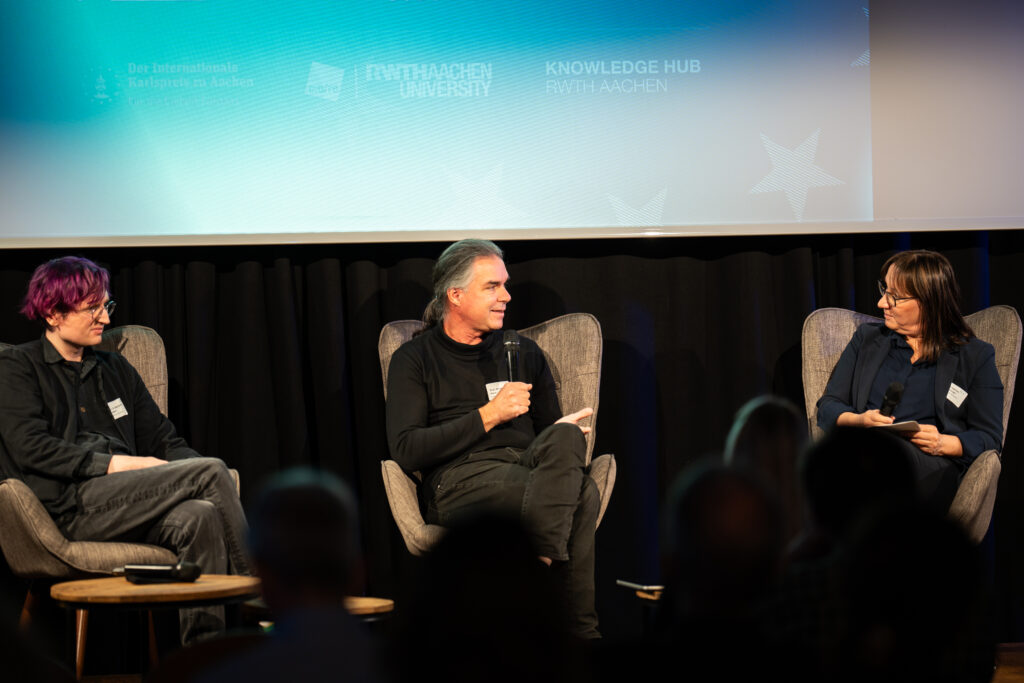
Conflicts over Academic Freedom and the Role of Universities
The de facto implementation of academic freedom worldwide was presented by Dr Lars Lott from the research project Academic Freedom Index at the Friedrich-Alexander-University Erlangen-Nuremberg. In a 50-year comparison, from 1973 to 2023, he illustrated a significant improvement of academic freedom in countries worldwide. However, looking from an individual perspective, the opposite is true: almost half of the world’s population lives in countries where academic freedom is severely restricted due to the rise of populist and authoritarian regimes.
Dr Dominik Brenner from the Central European University in Vienna reported firsthand on the forced relocation of the Central European University (CEU) from Budapest to Vienna and noted that such restrictions of academic freedom are an integral part of illiberal policies. Dr. Ece Cihan Ertem from the University of Vienna provided another example of increasing authoritarianism in academic institutions by discussing the suppression of academic freedom at Turkey’s Bogazici University by the government. Prof. Dr Carsten Reinhardt from Bielefeld University warned of the modern efforts in our societies to restrict academic freedom through fake news or alternative facts. From a historical perspective, these are fundamental attacks destroying the basis of truth finding, referring to similar developments during the Nazi regime in Germany.
Another pressing issue, the precariousness of academic employment in Germany, was highlighted by Dr Kristin Eichhorn from the University of Stuttgart and co-founder of the #IchBinHanna initiative, protesting against academic labor reforms that disadvantage early and mid-career researchers. She pointed out that the majority of faculty work on fixed-term contracts, which significantly restricts researchers’ ability to exercise their fundamental right to academic freedom due to tendencies to suppress both structural and intellectual criticism.
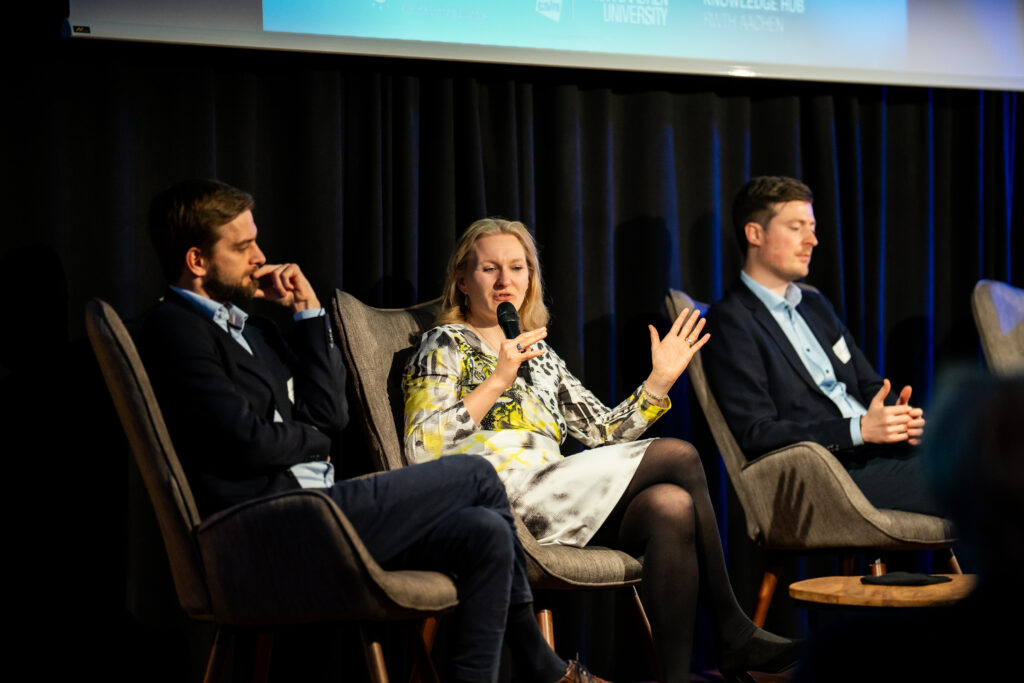
How to deal with these challenges? Prof. Dr Stefan Böschen, Director of the Käte Hamburger Kolleg: Cultures of Research (c:o/re), stressed that political assumptions and politically motivated conflicts can make academic discourse more difficult. However, it is important to foster dialogue once a common basis for discussion has been established. Frank Albrecht from the Alexander von Humboldt Foundation advocated for greater efforts in science diplomacy and the vital role of academic institutions in international relations. Miranda Loli from the Robert Schuman Center for Advanced Studies, the European University Institute in Florence, and Charlemagne Prize Fellow 2023/24, emphasized the need for universities to act as reflexive communities that engage critically with the processes that shape academic freedom while recognizing their potential as informal diplomatic actors.
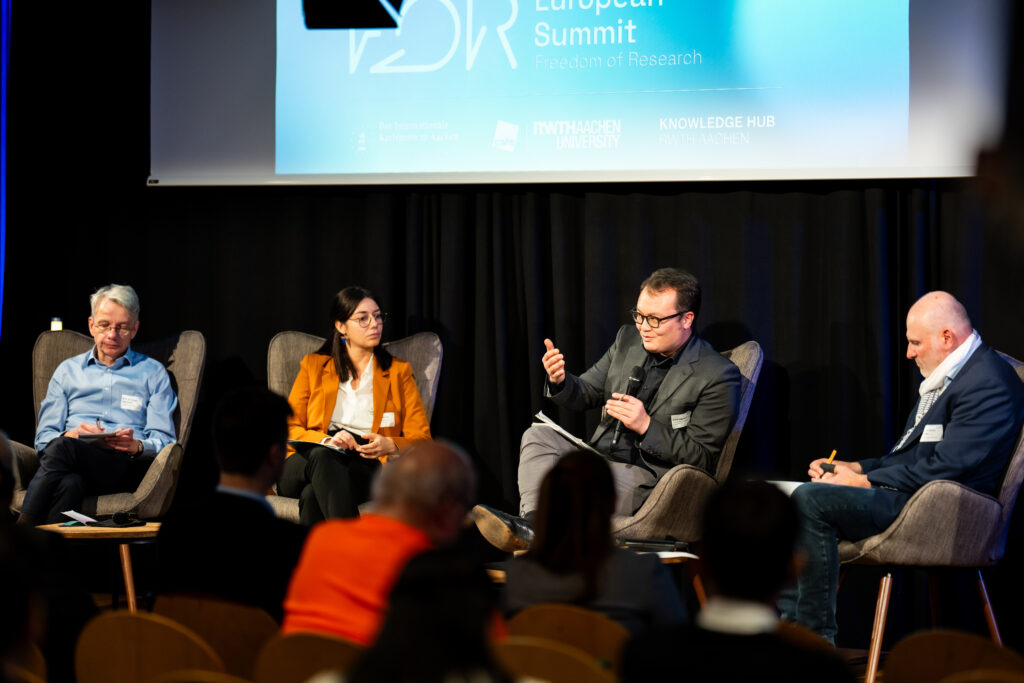
Research as a Basis for European Conflict Resolution
The intersection of academic freedom and conflict resolution was explored in a discussion between Dr Sven Koopmans, EU Special Representative for the Middle East Peace Process, and Drs René van der Linden, former President of the Parliamentary Assembly of the Council of Europe and Dutch diplomat, moderated by Dr Mayssoun Zein Al Din, Managing Director of the North Rhine-Westphalian Academy for International Politics in Bonn. They argued that research is essential for understanding and resolving global conflicts and emphasized the role of the EU as a key player in international peace efforts. The two discussed the challenges of assessing conflicts from a European perspective, particularly the differing opinions of member states, and highlighted the EU’s economic power as a crucial factor in international peace efforts. Dr Koopmans emphasized the importance of an optimistic outlook, stating: “Let’s work on the basis – that there is a peace that we may one day achieve. It maybe sounds very difficult […], but you know: Defeat is not a strategy for success.”
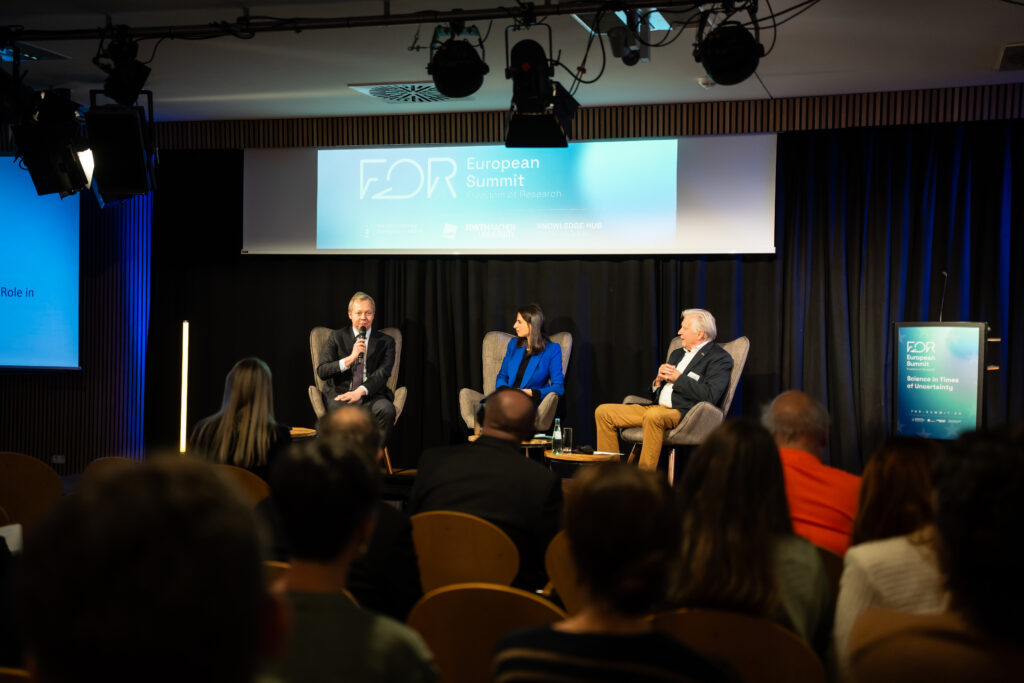
The symposium underlined the critical importance of protecting freedom in research, science, and diplomacy. The discussions made clear that academic freedom is neither given nor a permanent state; rather, it requires continuous vigilance and proactive efforts to preserve. The collective message from the symposium reinforced that science in times of uncertainty can be navigated through regulation and governance for innovation, a strong European and international academic community, and independent universities as safe places to ensure the future of a democratic, secure and progressive Europe.
Photo Credits: Christian van’t Hoen
The Freedom We Stand For

RWTH KNOWLEDGE HUB
RWTH’s Freedom Late Night event brought a vibrant mix of guests to the Ludwig Forum, offering talks, discussions, performances, and entertainment that celebrated diverse perspectives on freedom.
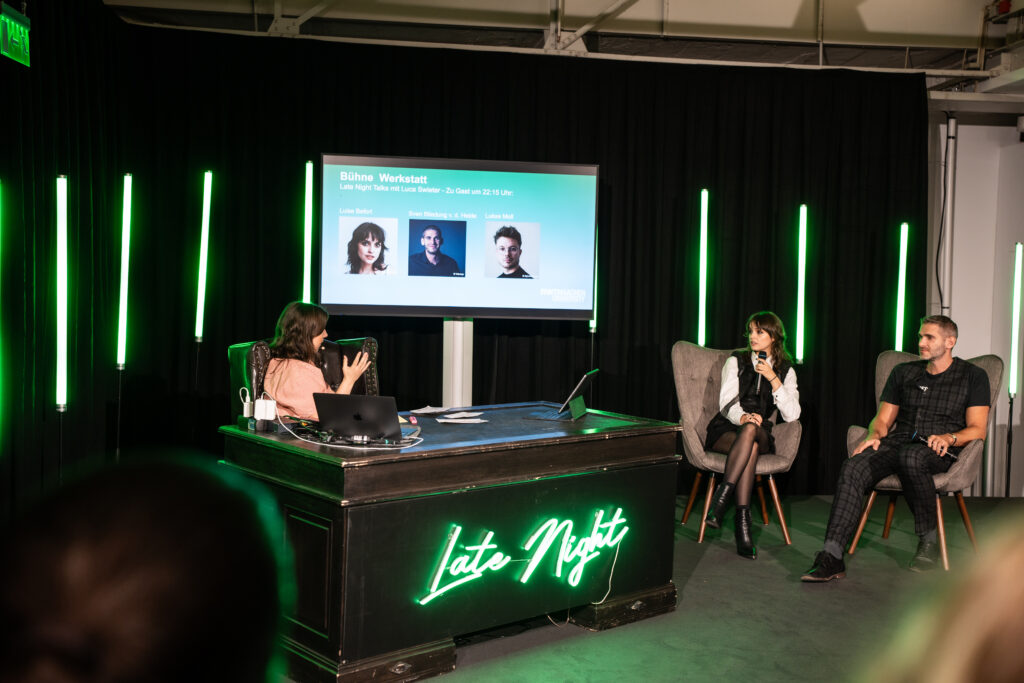
“Why not cook a pot of soup and share it with your neighbors?” Publicist Marina Weisband’s suggestion at RWTH’s second Late Night event was one of the many unconventional ideas presented to bridge divides within society.
Held Monday evening at the Ludwig Forum für Internationale Kunst, RWTH hosted a dynamic, entertaining, and insightful program on the theme of freedom. Moderated by journalist Claudia Kleinert and poetry slammer Luca Swieter, the event featured guests from culture, politics, sports, and academia, including Marina Weisband, actress Luise Befort, podcaster Dr. Ulf Buermeyer, former national soccer player Andreas Beck, and Borussia Mönchengladbach’s chief data analyst, Johannes Riegger.
Discussions across three stages explored freedom from sporting, cultural, scientific, philosophical, political, and social perspectives. Musical and artistic highlights included a specially choreographed performance by the dance ensemble Maureen Reeor & Company, the lively Popchorn pop choir, and the RWTH Big Band.
Throughout the evening, the unique setting of the Ludwig Forum underscored the importance of unity and the need to avoid societal divides. As Weisband noted, “With a bowl of soup in hand, engage with your neighbors to confront populist narratives together. Take the liberty to try something a bit daring now and then.”
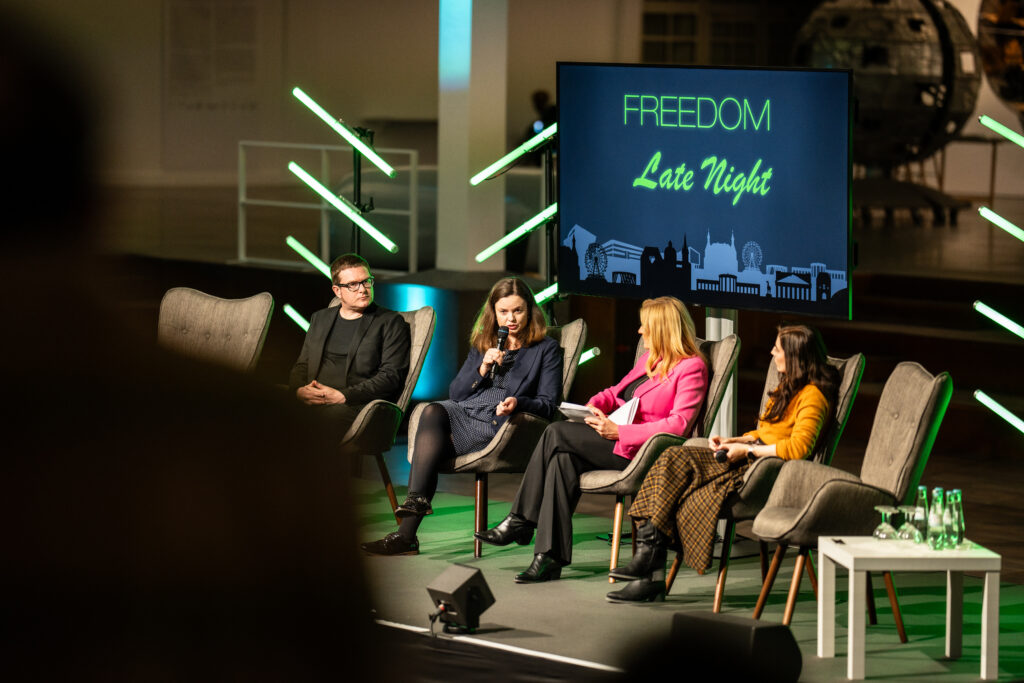
The complexities of today’s reality were echoed by Dr. Domenica Dreyer-Plum from RWTH’s Institute of Political Science, who observed that while many people are frustrated with the current political and social climate and are tempted to protest or support extremist parties, “the AfD only seemingly has an answer to the big questions.”
For the academic guests, discussions naturally turned to freedom in research. Professor Verena Nitsch, head of RWTH’s Institute of Industrial Engineering and Ergonomics and chair of the University’s Ethics Commission, emphasized that the Commission’s role is not to restrict research, “but to train researchers to anticipate risks”.
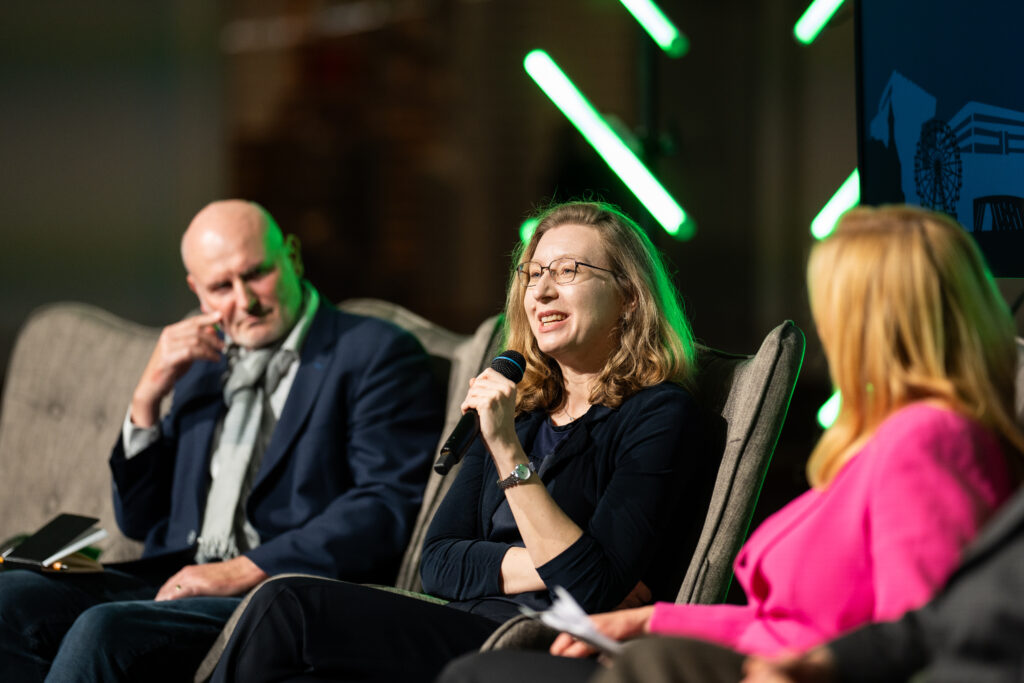
“We live in times where technology is powerful, but wisdom is lacking,” added Professor Stefan Böschen, spokesperson for RWTH’s Human Technology Center and co-director of the “Cultures of Research” Käte Hamburger Center, highlighting the ethical challenges posed by AI and advanced technology.
Former judge and podcaster Dr. Ulf Buermeyer offered a practical take on restoring trust in politics: “We need substantial investment in railways and infrastructure like bridges. People need to see and feel that progress is happening. We can’t just talk our way out of this crisis.”
For actress Luise Befort (Club der roten Bänder, Der Palast), freedom is something many take for granted: “I am allowed to work in my profession – unlike so many women around the world.” Befort sees this as a profound privilege she does not take lightly.
Professional footballers, however, face a more limited kind of freedom. Johannes Riegger, chief data analyst at Bundesliga club Borussia Mönchengladbach, and former national player Andreas Beck (VfB Stuttgart, Besiktas Istanbul) shared anecdotes about the intense monitoring they undergo. Beck described how their movements on the field are tracked with advanced technology, making performance data highly transparent. Yet, according to Riegger, the level of surveillance is even greater in the United States, where athletes in major leagues are subjected to round-the-clock monitoring. By comparison, the monitoring in Germany is seen as manageable and part of the job.
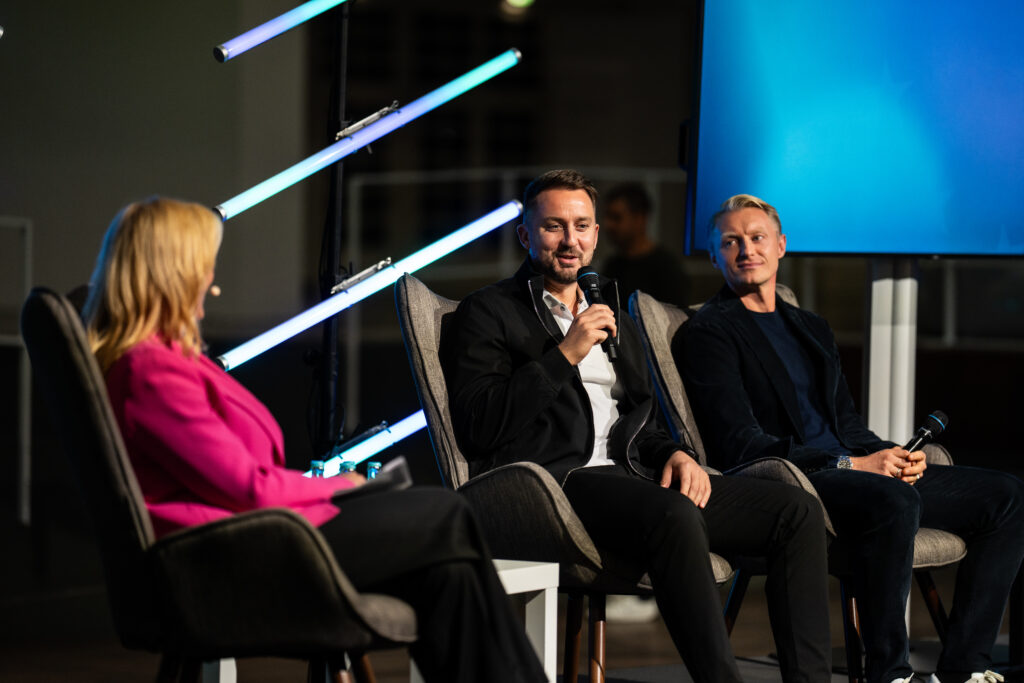
A diverse lineup of speakers shared their insights on freedom and technology. Among them, Luise Befort; queer artist Lukas Moll, who warned that “technology can discriminate, and algorithms can reinforce stereotypes”; Frank Albrecht of the Humboldt Foundation, who reflected on “the privilege of living in a country like Germany, where academic freedom is highly valued”; screenwriter Jana Forkel, who said, “When it comes to creative work like screenwriting, AI poses no threat yet – this is where human input remains essential”; Volucap CEO Sven Bliedung von der Heide, who noted, “At Volucap, we’re pioneering new possibilities in film production, though our goal isn’t to replace actors entirely”; and author Betül Hisim, who observed, “AI can be a source of inspiration but is far from replacing the essence of what makes us human.”
The RWTH Late Night event was organized by the RWTH Knowledge Hub as part of the Freedom of Research Summit, a collaboration between the Stiftung Internationaler Karlspreis zu Aachen, the Knowledge Hub, and the Cultures of Research Käte Hamburger Center.
The RWTH Knowledge Hub is a vital instrument for transferring knowledge to society. “Knowledge isn’t only created at RWTH; it’s essential that we also share it with society – as we are doing tonight with the Late Night,” said Professor Matthias Wessling, Vice-Rector for Research Transfer at RWTH.

Despite their diverse perspectives, all the speakers agreed on one message: that freedom and democratic values require active effort. To quote Goethe: “This is the highest wisdom that I own; freedom and life are earned by those alone who conquer them each day anew.”
Photo Credits: Christian van’t Hoen

